
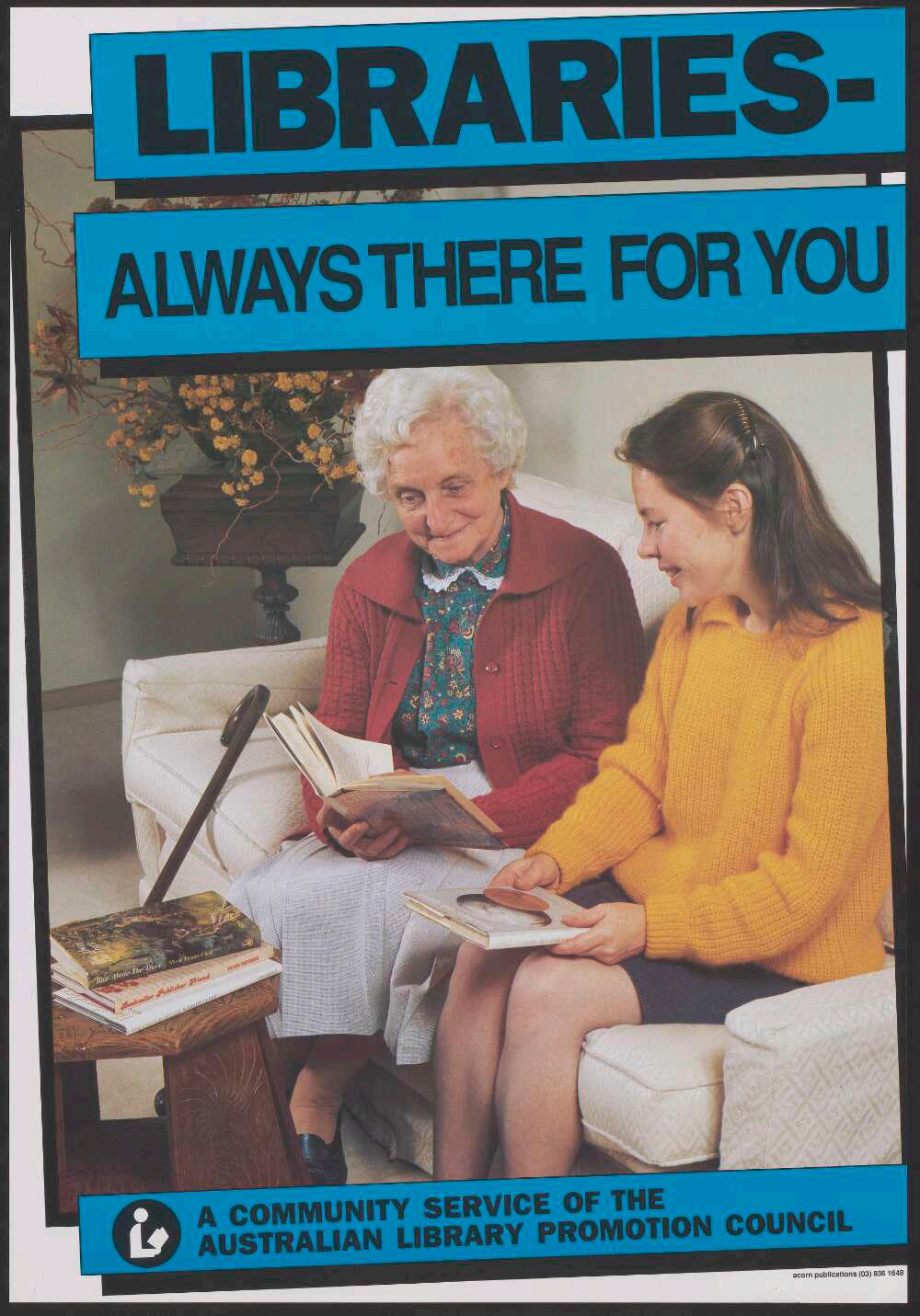
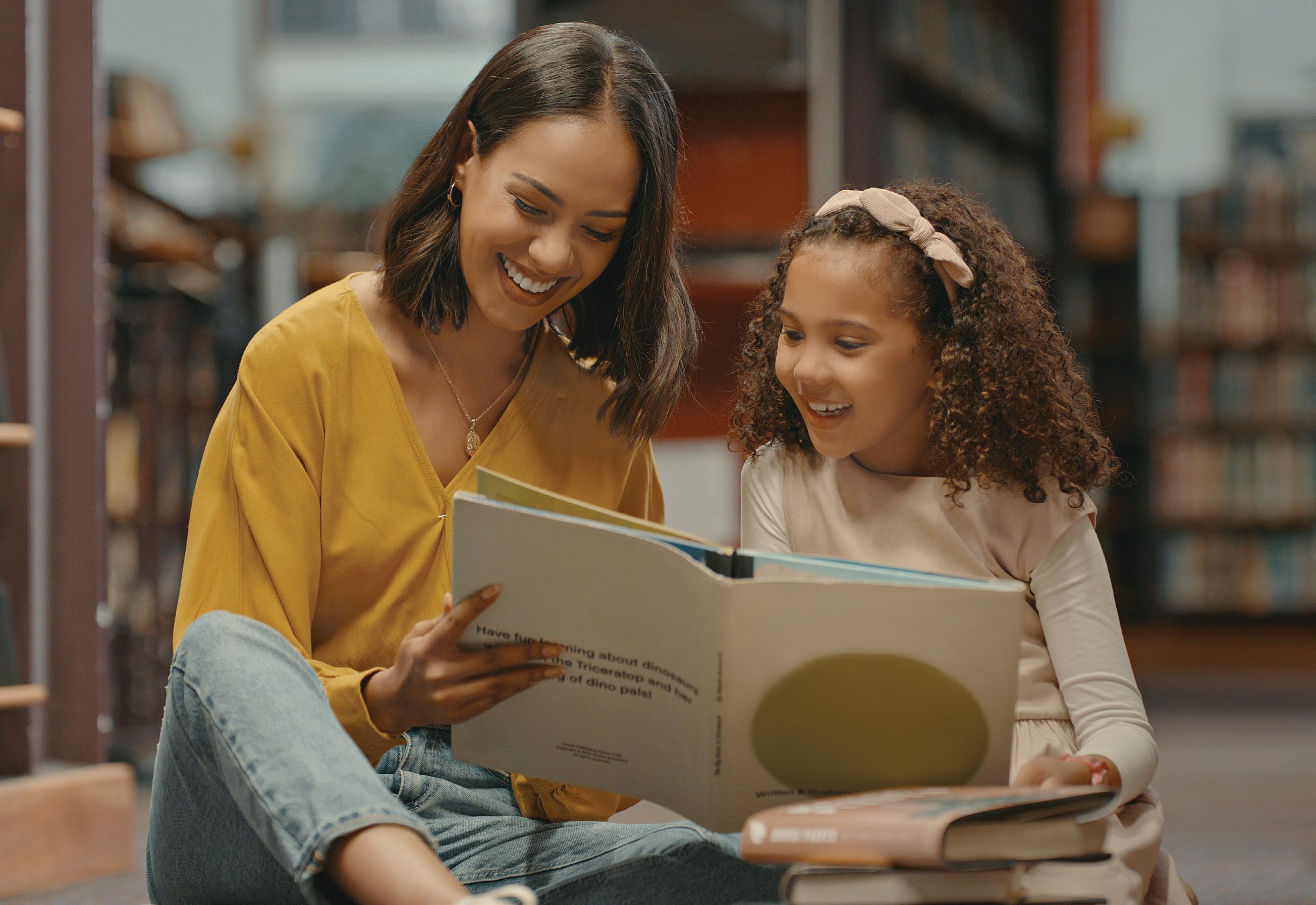




Innovative helps you deliver an intuitive and exciting library experience to patrons, staff, and donors, whether in the library or online. For more information contact
Innovative provides solutions that streamline workflows, reduce tedious tasks, and unlock efficiencies so staff can reinvest time in library programs and community engagement.
Excite Your Community
We help libraries meaningfully and consistently connect with patrons to create involved community advocates and build more modern, impactful experiences.
Through our collaborative development process, we offer a full ecosystem of smart, scalable, and adaptive library solutions to maximize your operating budget and drive better outcomes.
andre.stephenson@clarivate.com

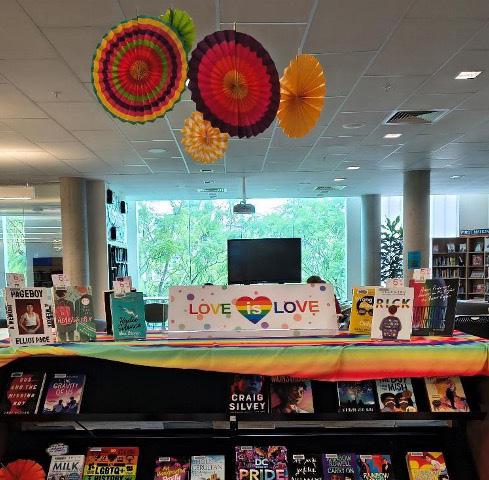
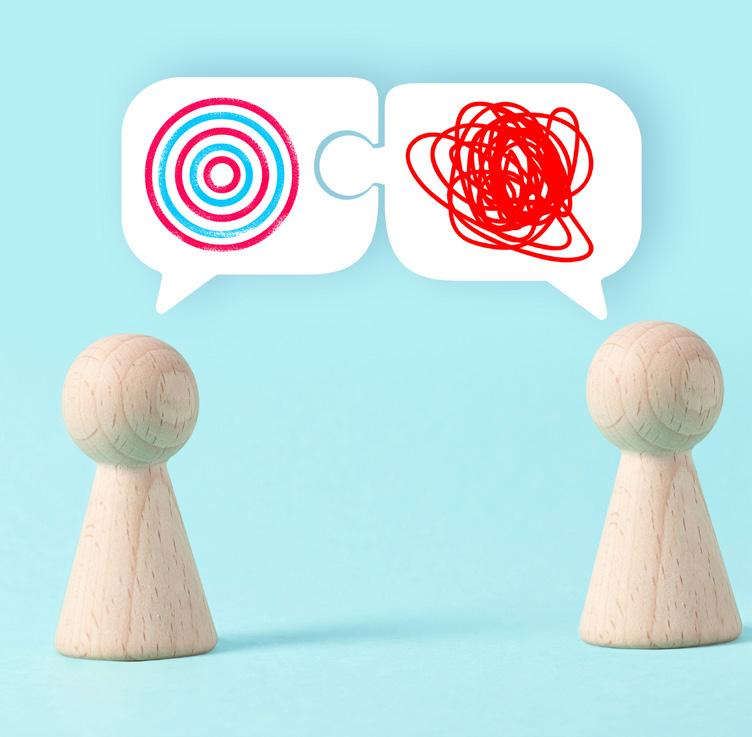
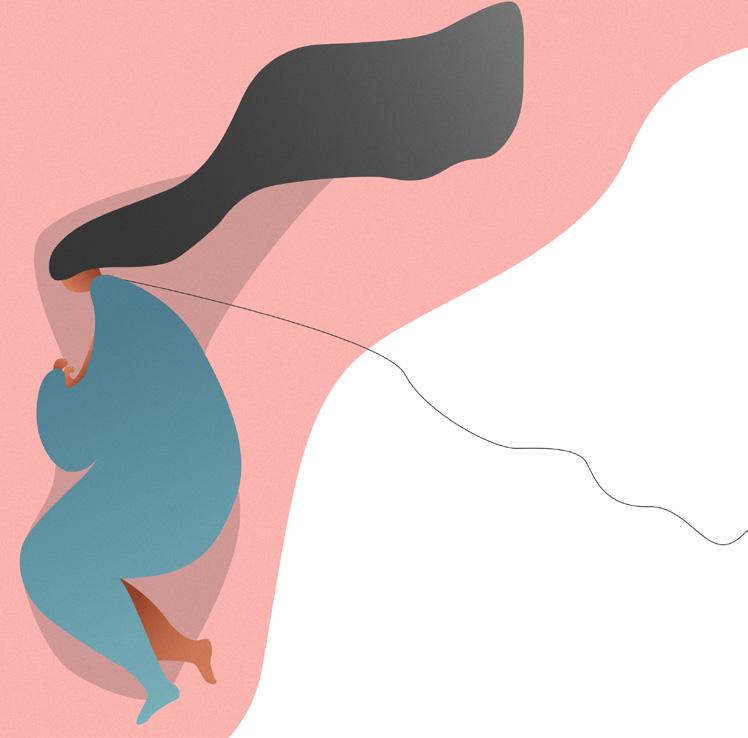
Editor: Liz Bradtke incite@alia.org.au Design: Coretext www.coretext.com.au Advertising: Katrina Gee media@alia.org.au Events: events@alia.org.au
Welcome to the third edition of INCITE for 2025. Here at the ALIA National Office, we’re starting to see the early glimpses of spring – which means we’re fast approaching Q4 of 2025! With the New Librarians’ Symposium XI under our belts, we’re now looking forward to the upcoming VET Libraries Conference, which will take place from 22 to 23 October. This virtual conference is designed to empower library and information professionals working in vocational education institutions by providing them with the latest knowledge and expertise required to meet the challenges of the 21st century. Registrations are still open, so head to the website to learn more. We also have end-of-year celebrations open for registration from ALIA NSW and ALIA SA, and nominations are still open for the South Australian Library and Information Awards (SALIAs). This is always a busy time of year, so keep an eye on our Upcoming events page to see what’s in the pipeline.
And now to INCITE. In this edition, we begin with ‘Library stories’, spotlighting the experiences of Annie-Jo Vogler and Claire Hinton, who have just completed student placements at ALIA. Annie-Jo and Claire have been busy working on some extraordinary initiatives, with Claire commencing work on the ALIA Guidelines for Multicultural Collections and Services and Annie-Jo developing a research project on public library partnerships with schools. Both have also taken part in disaster risk management training with Dr Heather Brown. We’ve so enjoyed having Claire and Annie-Jo with us and hope you enjoy reading about their experiences.
In our new regular column ‘Researcher insights’, we hear from PhD candidate Krystal Gagen-Spriggs, LIS practitioner Sarah May, and academics Dr Jo Kaeding and Dr Agata Mrva-Montoya, whose projects span reading cultures, workplace wellbeing, and accessibility for people with a print disability. In ‘From the archive’, Anna Griffith
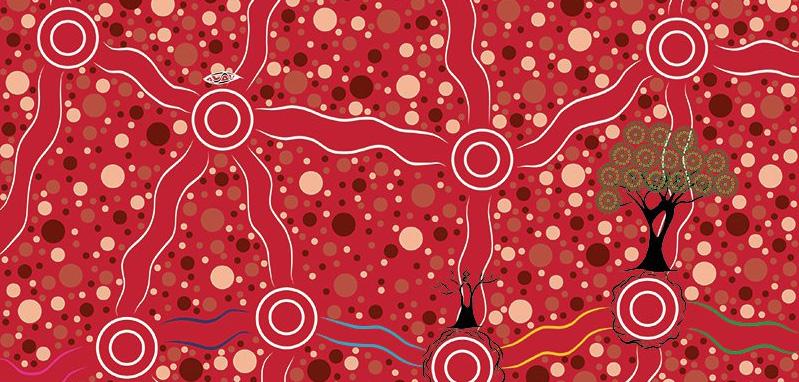
By Liz Bradtke Editor
revisits the story of Victoria’s earliest educational library museums and the curious journey of a Sèvres vase.
This issue also covers some recent highlights for ALIA, including the launch of our new foundational course on ‘Respect and Recognition of Aboriginal and Torres Strait Islander Peoples, Cultures and Country in Australian Libraries’, developed in partnership with the Jumbunna Institute of Indigenous Education, and reflections on the Charlotte Henry Study Grant and the introduction of the Schools Cataloguing Community of Practice.
Our feature section brings together articles exploring a diverse array of topics — from young women’s perspectives on alcohol, vaping and drugs, to the ways libraries are becoming health hubs supporting community wellbeing (including guiding patrons through grief), and even how Australian Lending Rights puts money directly into the hands of authors and creators. Collectively, these contributions highlight not only the breadth and reach of our sector, but also the ways in which the library workforce continues to design and deliver services that embrace the full spectrum of human experience — even when the issues are complex and challenging. It is truly inspiring to see.
I hope you enjoy the articles in this edition.
Liz Bradtke, Editor incite@alia.org.au
The Australian Library and Information Association acknowledges the Traditional Owners of Country throughout Australia and recognises their continuing connection to lands, waters, cultures and communities. We pay our respect to Aboriginal and Torres Strait Islander peoples; and to Elders past and present.
Artwork: Richard Allan Jr.
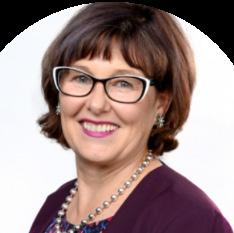
Cowell AALIA (DCP) ALIA President
Welcome to the September edition of INCITE. As we step into spring, there’s a real sense of renewal and activity across our sector, and recent events and initiatives have highlighted both the strength of our professional community and the exciting directions in which we are moving toward together.
ALIA was delighted by the success of the recent New Librarians’ Symposium XI. I know there were many first-time presenters over the course of the day, and I want to thank them for embracing the opportunity to contribute and for the fresh perspectives they brought to the discussions.
In addition, the closing panel, ‘Freedom to read’, was a particularly powerful session, with frontline library staff sharing their experiences of upholding intellectual freedom in Australian libraries. It was a timely reminder of just how important it is for us to keep these conversations alive across the sector, and to continue our collective efforts in defending the freedom to read and ensuring equitable access to information in our libraries.
Another highlight this month was the launch of ALIA’s new training course — ‘Respect and Recognition of Aboriginal and Torres Strait Islander Peoples, Cultures and Country in Australian Libraries’ — developed in partnership with the Jumbunna Institute for Indigenous Education. I am so very proud to see this foundational course now available to all library workers. It represents a significant step in building the knowledge, skills and confidence we need to embed cultural respect into our everyday practice, and it will strengthen and diversify our sector well into the future. It is my hope that this course inspires all libraries to give voice to local Elders, acknowledge their knowledge and connection to land, and celebrate First Nations cultures across the nation. You can find out more about the course and register here

Finally, I have just cast my vote in the ABC Radio National’s ‘Top 100 books of the 21st century countdown’ — and I encourage you all to do the same. The longlist offers a rich cross-section of Australian and international fiction, non-fiction, poetry, and children’s and young adult literature, with the option to manually add your own selections if they are not already captured. Whatever the final list may look like, this is a wonderful opportunity to celebrate the power of reading and highlight the books that have shaped us over the past 25 years. ALIA has partnered with ABC Radio National to develop a suite of promotional resources to help libraries spread the word about the countdown and encourage their communities to participate.
I hope you enjoy this edition of INCITE. For a full overview of what’s inside, be sure to check out ‘From the Editor’.
Jane Cowell AALIA (DCP) ALIA President
If you’d like to contribute to the December or March editions of INCITE, submit your story idea or get in touch at incite@alia.org.au. INCITE is a platform for collaboration, a space to celebrate achievements, and a record of the ever-evolving role of libraries and information professionals. If you have a story to tell, we want to hear it.
‘Don’t pass up opportunity for growth (within reason!)’
In this special edition of ‘Library stories’, it’s two for one! We spoke to Annie-Jo Vogler and Claire Hinton, who have just completed a placement with ALIA as part of their Graduate Diploma in Library and Information Management. We have loved having Annie-Jo and Claire with us, and we wanted to find out more about the work they’re did at ALIA, what drew them to the library and information workforce, and some of the incredible initiatives they are involved with.
ALIA: To start, could you introduce yourself, tell us where you’re currently working or studying, and what motivated you to undertake a placement with ALIA?
AV: I currently manage the public library in Quilpie, a tiny town in a shire the size of Tasmania in remote south-west Queensland. It was definitely a huge change and learning curve when I moved out here two years ago. It’s boiling heat in summer, freezing winds in winter, and a 400-kilometre round trip to go to the vet or the dentist is considered normal, but I love the community out here and the freedom to live life at your own pace.
I’m also completing my Graduate Diploma in Library and Information Management at the University of South Australia, the final step being industry placement. Due to work commitments and distance constraints, I knew remote placement would be the best fit for me, and my course coordinator mentioned ALIA had previously facilitated remote placements. I was keen to learn more about the behind-the-scenes of ALIA, especially its advocacy work and the diversity of specialisations it supports within the sector. What role have libraries played in your life — personally, professionally or both? In a way, I’ve grown up with, in and thanks to the library. I got my first library card at six months old (the librarian who signed my older sisters up didn’t think I should be left out! ) and discovered some of my favourite books as a child browsing at the library. My first job after high school was as a library trainee in my hometown library (shout out to Excelsior Library, Charters Towers! ) and
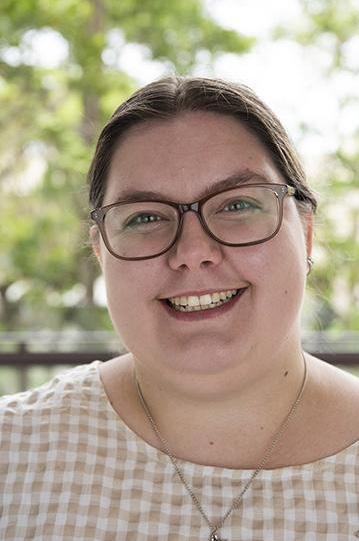
I met one of my best friends because we both worked at the library. And, of course, reading would be a ridiculously expensive hobby without my library card! What first drew you to the library and information (or education) sector, and what continues to inspire you in this field? In the beginning, it was the books — very on-brand for a 17-year-old book nerd. But it wasn’t until I started working in a public library that I realised how truly public-facing and community-minded the role would be. It can be an incredibly fulfilling career,
but on the flipside, there’s a high potential for burn- out and stagnation due to the competing pressures of the role. For me, having a network of passionate colleagues across the state to lean on, learn from and celebrate with is the antidote. Their work, commitment and belief in the importance of libraries inspires me.
What’s one aspect of your day-to-day work that might surprise people or isn’t widely understood about the profession?
Something I still hear is ‘Oh it must be nice to read all day!’. I think the multifaceted aspects of public library roles are not always widely understood — sometimes I’m a circulation, programming, children’s, digital media and local history librarian all in the same day. Can you tell us a bit about the projects you’ve been working on during your placement? What have you enjoyed most so far?
I’ve been primarily working with the education team. Jacqui, Emily, Trish and Heather are amazing humans — so welcoming and willing to share their collective expertise. I’ve learned so much about the breadth of work ALIA is involved in, particularly its policy and advocacy work. My main project relates to exploring partnership opportunities between public and school libraries, and I’ve connected with some leading academics and industry professionals in that space, which has been incredibly insightful. Finally, we always love a good recommendation — what’s something you’ve read or watched recently that you’d suggest to our readers?
Blood over bright haven by ML Wang and The coast road by Alan Murrin have been highlights of my reading year so far! For watching, I would recommend Kaos on Netflix — a fun, fresh, slightly devastating take on Greek mythology.
ALIA: To start, could you introduce yourself, tell us where you’re currently working or studying, and what motivated you to undertake a placement with ALIA?
CH: I work as an academic English and communication teacher preparing international students to enter university, and I’m also studying a Graduate Diploma in Information Management at the University of South Australia. My current placement with ALIA is my final subject before graduation. Over the past few years, I have relied on many aspects of ALIA’s work to support my studies, including the ALIA Library, the Journal of the Australian Library and Information Association, and documents such the Code of Ethics.
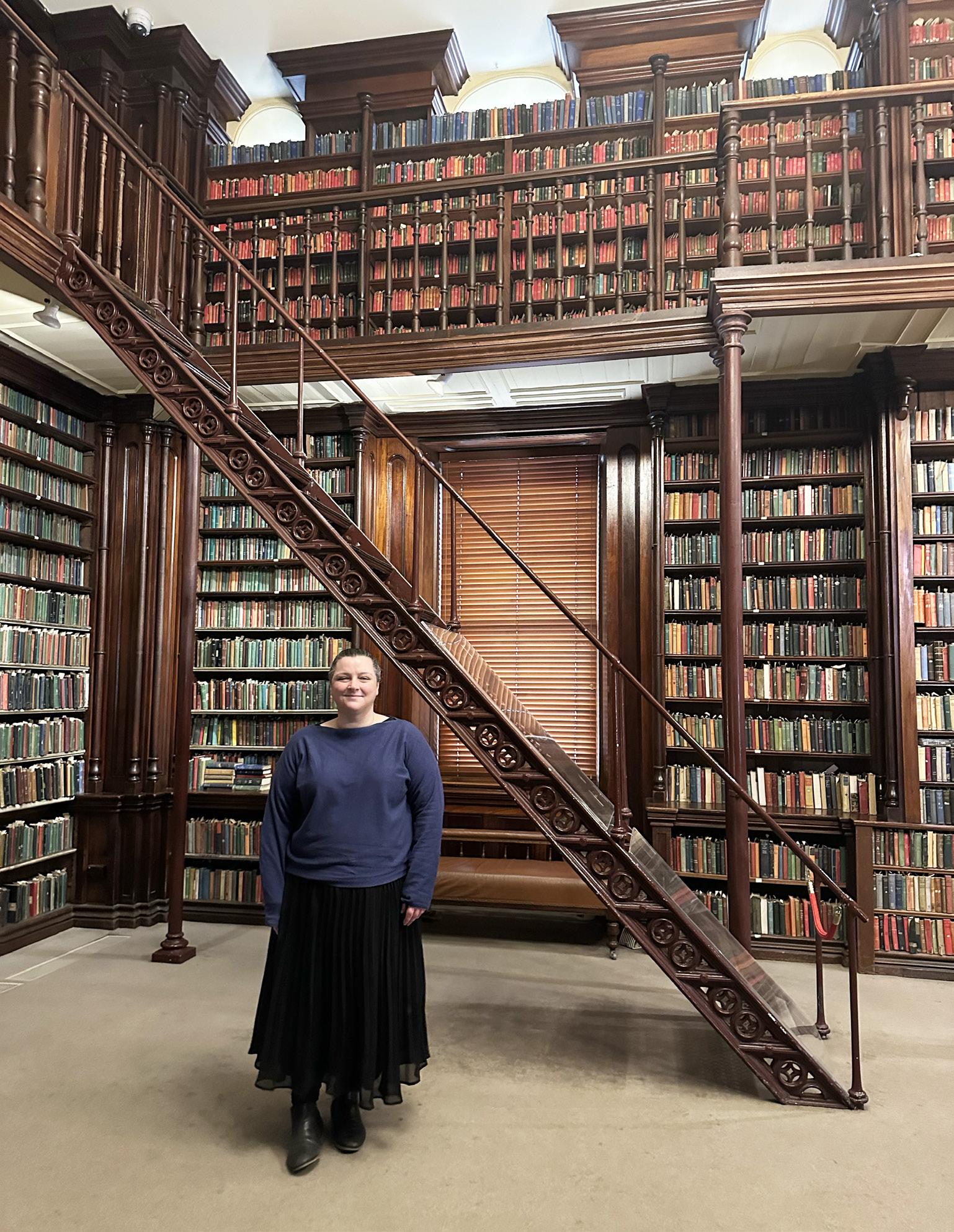
However, since starting my placement, I’ve realised I had only scratched the surface of all the wonderful things that are happening here! Some of the activities I’ve been privileged to learn more about include the ALIA Mentoring Scheme, the Reparative Description Community of Practice, the new Schools Cataloguing Community of Practice, disaster preparation and salvage, and the many special interest groups such as ALIA Multicultural. It’s been truly eye-opening! What role have libraries played in your life — personally, professionally or both?
Growing up as a prolific reader, I was drawn to libraries both as a source of books and as a quiet, understanding space. However, as I got older, life got busy and I forgot how much I loved them. What brought me back to libraries was having my own children. My first storytime was a revelation for me; the staff were full of energy, parents and carers of all ages and cultures were connecting, and the children were having a blast. My kids now have their own library cards and frequently borrow as many books as they can carry. I can’t believe how lucky we are to be able to access all of this so conveniently and for free. What first drew you to the library and information (or education) sector, and what continues to inspire you in this field?
I enrolled in my library and information qualification during the uncertainty of the pandemic, and I investigated several study options before landing on information management. I was drawn to this sector for many of the same reasons I was drawn to education: it has a positive community impact, balances creativity with intellectual
challenge, and is future-facing and optimistic. I’m happy to say I made a great choice; I love the values-based nature of the library and information sector, and the curiosity, collaboration and constant striving for improvement. One thing I have really enjoyed about my studies is producing work in so many different formats beyond essays and reports, such as grant applications, technology plans, websites, LibGuides and infographics. Each assignment challenged and extended me in a different way. Another surprise benefit was experiencing tertiary study from the student perspective again after many years — this has helped me put myself in the shoes of my own students. What’s one aspect of your day-to-day work that might surprise people or isn’t widely understood about the profession?
In education, there’s a growing appreciation that many of today’s students will end up working in jobs that don’t even exist yet. It’s not always possible for us to predict what our students will need to know in the future, so we need to give them the skills to be independent, lifelong learners. This means that there’s significant alignment between the work of teachers and the work of library professionals in promoting successful retrieval of information. In other words, I think students need libraries more than ever! While they’re with me, I make sure my students take steps towards becoming confident library users. I assign a treasure hunt in our academic library as a homework activity — the treasures being things like the recreational reading collection or the printers — and introduce aspects of online
catalogues and academic databases such as using keywords and filtering results. With the rise of social media and artificial intelligence, it’s also becoming increasingly important to teach skills in source selection and evaluation. The behind-the-scenes understanding that I have gained from my information management studies has helped me to deepen and refine my teaching of all these skills.
Can you tell us a bit about the projects you’ve been working on during your placement?
What have you enjoyed most so far?
Many readers will be aware that ALIA has recently released the ALIA Principles for Multicultural Collections and Services. For my project, I’m working on a draft set of guidelines that detail practical ways that library and information services can uphold these principles within their organisations. I’m doing this through a literature review and consultation with members of ALIA Multicultural, who have been kind enough to agree to share their time and expertise. I feel very lucky to have the chance to take part in such a valuable project.
Finally, we always love a good recommendation — what’s something you’ve read or watched recently that you’d suggest to our readers?
It’s a sentimental choice, but the most recent book that I’ve loved was Sunrise on the reaping by Suzanne Collins. There’s something so nostalgic and heartbreaking about a well-written prequel, and I loved the context and depth it added to the original Hunger Games trilogy.

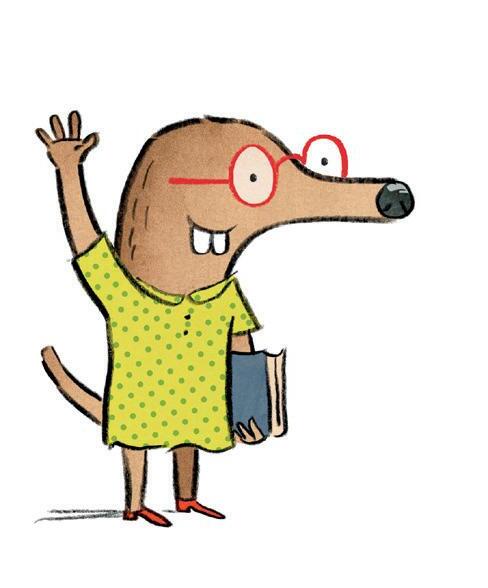




- Select Activity Time - Go ahead and explores hundreds of Activity Times to share with yo
“Watching the storytelling videos and interacting with the content on StoryBox is a great way for kids to be introduced to literature in a fun and interactive way.”
Christine Peters, Project Officer, Public Libraries Victoria
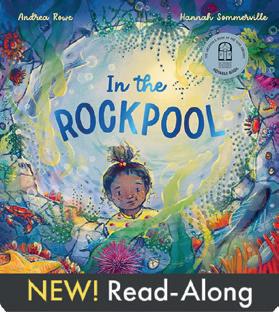





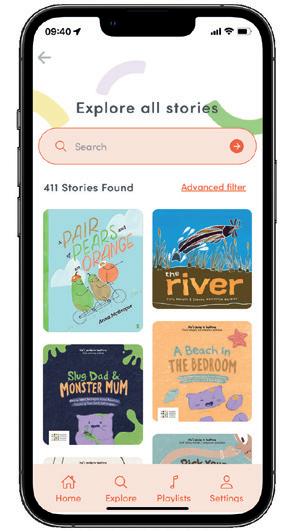
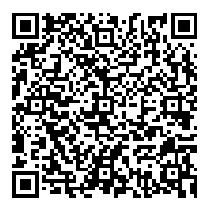



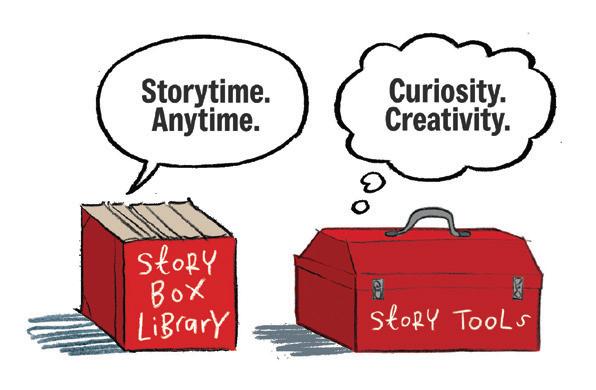
First introduced in the June edition of INCITE, ‘Researcher insights’ is a regular feature that celebrates some of the exciting and impactful research happening across the library and information sector. Each edition spotlights an academic, a practitioner and a PhD candidate, highlighting the diverse ways evidence is being generated to inform and strengthen our profession. From practical guides to cultural studies, from frontline services to emerging policy, these projects showcase the breadth and depth of LIS research in action.

PhD candidate: Krystal Gagen-Spriggs
Role: Lecturer, Teacher Librarianship, School of Information and Communication Studies, Charles Sturt University
Research program description
Krystal Gagen-Spriggs is a lecturer and PhD candidate with the School of Information and Communication Studies at Charles Sturt University. Her PhD research aims to identify the various factors that may help or hinder the influence of teacher librarians on their school’s reading culture. Krystal has been working with three all-girls’ secondary schools in South East Queensland and has collected data from students, teachers, teacher librarians and principals through surveys and interviews. In addition to revealing the influence of teacher librarians and reading cultures, she has also uncovered some interesting findings related to students and their reading. Krystal hopes that her research will help empower teacher librarians to evaluate their school context and its reading culture, identifying context-specific factors that either need to be addressed or built upon to increase their influence. She looks forward to sharing findings from her work with the wider library community after completing her PhD.
Status: In progress
Contact: kgagen-spriggs@csu.edu.au
LinkedIn: www.linkedin.com/in/krystal-gagen-spriggs73a1ab120


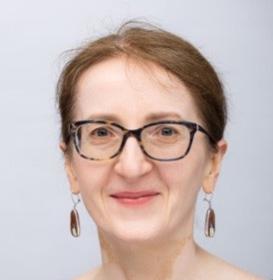
Researchers: Dr Jo Kaeding and Dr Agata Mrva-Montoya
Role: Dr Jo Kaeding, Program Director, Information Management, University of South Australia; and Dr Agata Mrva-Montoya, Director of the Master of Publishing, University of Sydney
Project description
Dr Jo Kaeding and Dr Agata Mrva-Montoya’s research explores the topic of print disability and public libraries in Australia. The aim is to understand the drivers and barriers to providing accessible public library resources and services for people with print disability in Australia.
The project involves three stages of research. Stage one, which has been completed, involved a questionnaire completed by 297 Australian public librarians. The results were published in the Journal of the Australian Library and Information Association
The second stage of the research involves in-depth interviews with Australian public librarians. Jo and Agata have presented preliminary results at the 2025 Round Table on Information Access for People with Print Disabilities Inc. The third stage will involve interviews with people with print disability, exploring their use/non-use of public libraries.
It is hoped the research will contribute to addressing the provision of accessible resources and services in Australia, ultimately advancing the fundamental right to literacy and knowledge for all.
Status: In progress
Contact: jo.kaeding@unisa.edu.au; agata.mrva-montoya@sydney.edu
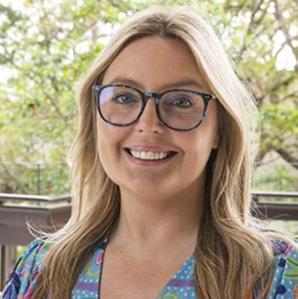
Practitioner: Sarah May
Role: Supervisor Libraries, City of Gold Coast
Project description
Sarah May completed her research as part of the 2024 State Library of Queensland and Queensland Public Libraries Association Library Leaders Program, under the guidance of her mentor, Linda Barron (Director of Information Services, State Library of Queensland).
Prompted by recent legislative changes concerning psychosocial wellbeing in the workplace, Sarah drew on her dual qualifications in law and librarianship to develop a guide aimed at supporting library professionals in navigating the unique challenges of the sector and its complex legal landscape.
The guide offers an industry-focused perspective on psychosocial wellbeing and provides an in-depth exploration of the four most prevalent psychosocial hazards specific to libraries: high/low job demands, vicarious trauma, service creep and occupational violence.

By incorporating legal frameworks, case studies and practical examples, the guide empowers libraries to foster safer, more informed workplaces. It presents actionable strategies to mitigate harm, build resilience and promote wellbeing — making it a timely and valuable contribution to the evolving discourse on mental health in the library sector.
Status: This independent project is available for download via Sarah’s LinkedIn profile Contact: samay@goldcoast.qld.gov.au
Do you have a project you’d like to share? We’d love to hear from you — contact the ALIA Research Advisory Committee at enquiry@alia.org.au with the subject line ‘Researcher insight submission’.
By Anna Griffith
This piece is based on larger academic piece published in 2021:
Griffith, A, Carroll, MB & Farrell, O (2021). ‘From Sèvres to Melbourne: Art and education museums in 19th-century Victoria’, History of Education Review, 50(2), 272–286. https://doi.org/10.1108/HER-082020-0048
Libraries have long served as centres of professional knowledge, with rich histories that parallel the development of and changes in the professions they serve. Objects, such as books and artefacts, can help unlock the stories of these professions to create records of changing ideas over time. My colleagues (Mary Carroll and Oliver Farrell) and I attempted to uncover the history of the library at the Melbourne Teachers’ College, to further understand educational libraries and how they facilitated changes in the teaching profession. While trying to find traces of the collection, we uncovered the story of one object — a Sèvres vase — that had somehow made its way to the archives of Melbourne High School and now stood as a final vestige of the ways education libraries and museums helped facilitate and reflect changing pedagogical practices.
In late 19th-century Victoria, the foundation of the Melbourne Teachers’ Training College (MTTC) marked a turning point in teacher education in Australia. Co-located at the University of Melbourne, the purpose-built training facility was to include a ‘great educational library’ that would enable teachers to be trained academically, and replace the apprentice-style model of teacher-training that had gone before (Pearson cited in Buisson, 1889, p. 525). The original plans for the MTTC building show a large space on the ground floor labelled ‘Educational Museum’ (University of Melbourne Archives), that would allow trainee teachers to access objects for instruction such as books,
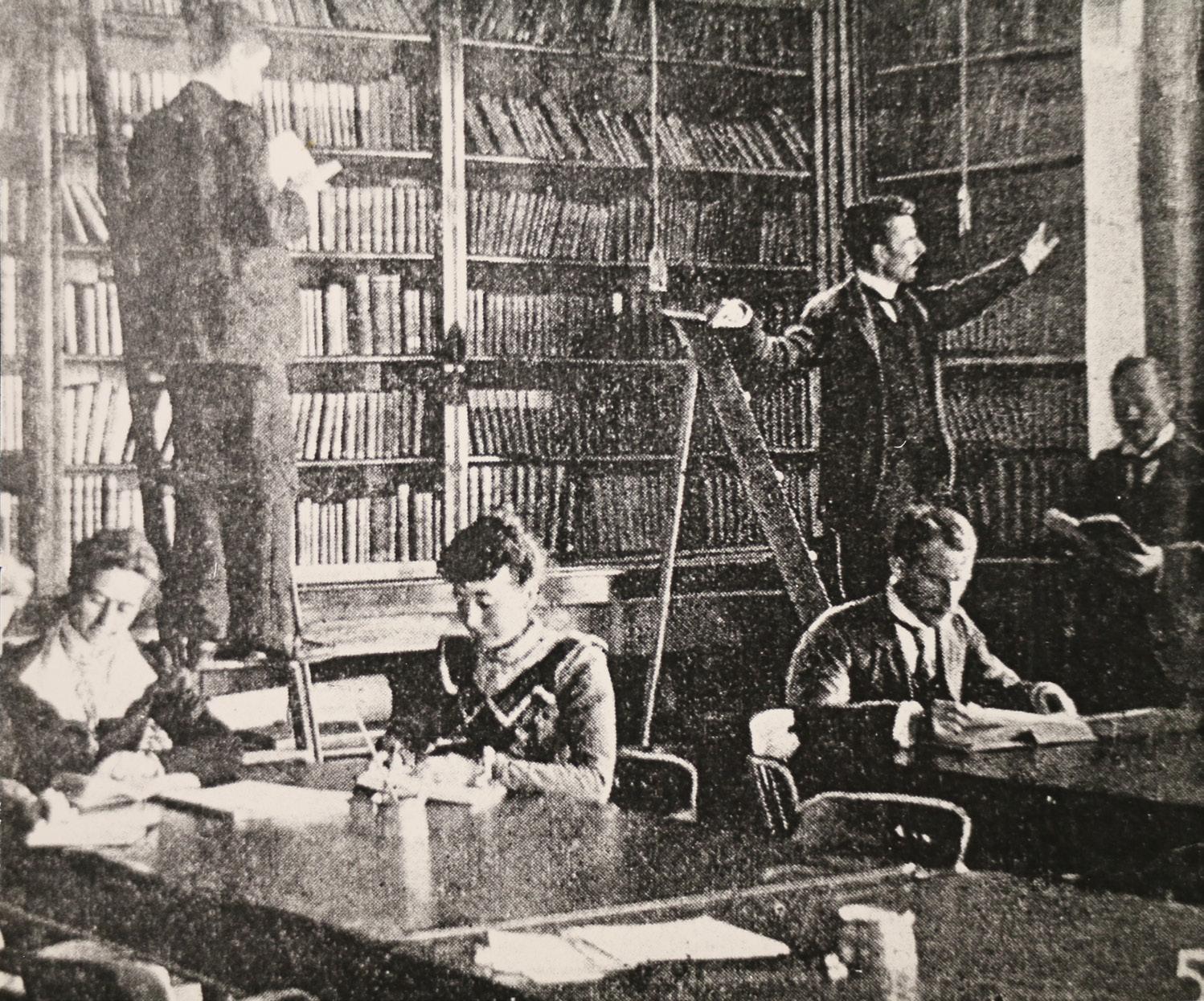


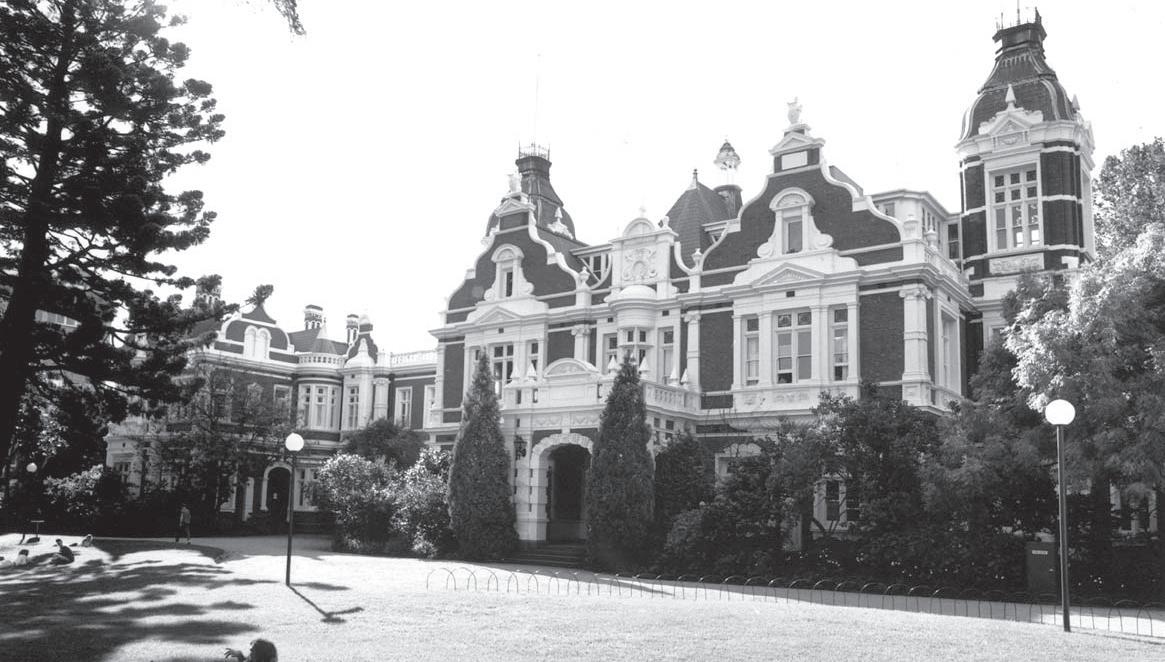
globes, maps and models to ensure they would develop in the ‘science and the art of education’ (Pearson cited in Buisson, 1889, p.525).
While the plans for the MTTC building were being finalised, Melbourne hosted the 1888 International Exhibition, just steps from the new college building. The link between international exhibitions and museums is well documented, with displays offered by visiting nations forming a unique opportunity for host nations to acquire objects from around the world (Bennett, 1995; Fuchs, 2009).
The education display offered by France at the 1888 Exhibition in Melbourne was considered one of the greatest educational collections ever brought together and won the Jury Prize for the section (Buisson, 1889, p. 524). This collection was remarked upon by Victorian educationalist Henry Charles Pearson, who spoke in Parliament about the quality of the display, including ‘maps, books, diagrams, scientific and school apparatus, art models, pictures, drawings, and most interesting technical work in wood, iron, and porcelain’ (Victorian Parliament, 1889, p. 35). Pearson declared that this collection would form the ‘nucleus of an educational museum about to be established at the new Training College’ (Victorian Parliament, 1889, p. 35).
Along with educational objects, France also exhibited some of its finest porcelain at the 1888 Exhibition. France had a tradition of giving ceramics to host nations at the close of international exhibitions, as
seen at the 1880 Exhibition in Melbourne, where Victoria received a specially produced vase from the Sèvres factory, painted with the City of Melbourne coat of arms, flags and motto vires acquirit eundo — ‘We gather strength as we go’ (City of Melbourne, 2017). In 1888, France had again selected a Sèvres vase to give to its host nation: an egg-shaped vase, factory number 214.109, of the second-largest size, pink ground decorated in blue enamel and highlighted in gold by Guillemain (Buisson, 1888; Executive Commissioners for the ICEM, 1888–1889, 1890, p. 138). After being exhibited in the Melbourne Exhibition Buildings, in an ‘idolised place of honour in the centre of a large gallery’ (Buisson, 1888), the Sèvres vase entered the public record in 1889 as the property of the Education Department (Public Library, Museums, and National Gallery Victoria, 1889).
The gift of the vase and the educational objects represented a unique show of amity between France and the colony of Victoria at this time. Both nations were advocating free, compulsory, secular education for their citizens (achieved in Victoria in 1872 with the Education Act). The French contingent to the 1888 Exhibition called out the colony of Victoria as a kindred state, which was ‘resolutely progressive’, taking examples of Victorian schools (via models and photographs) to be displayed in their own Musée Pédagogique. The Musée Pédagogique library in fact served as an exemplar for the
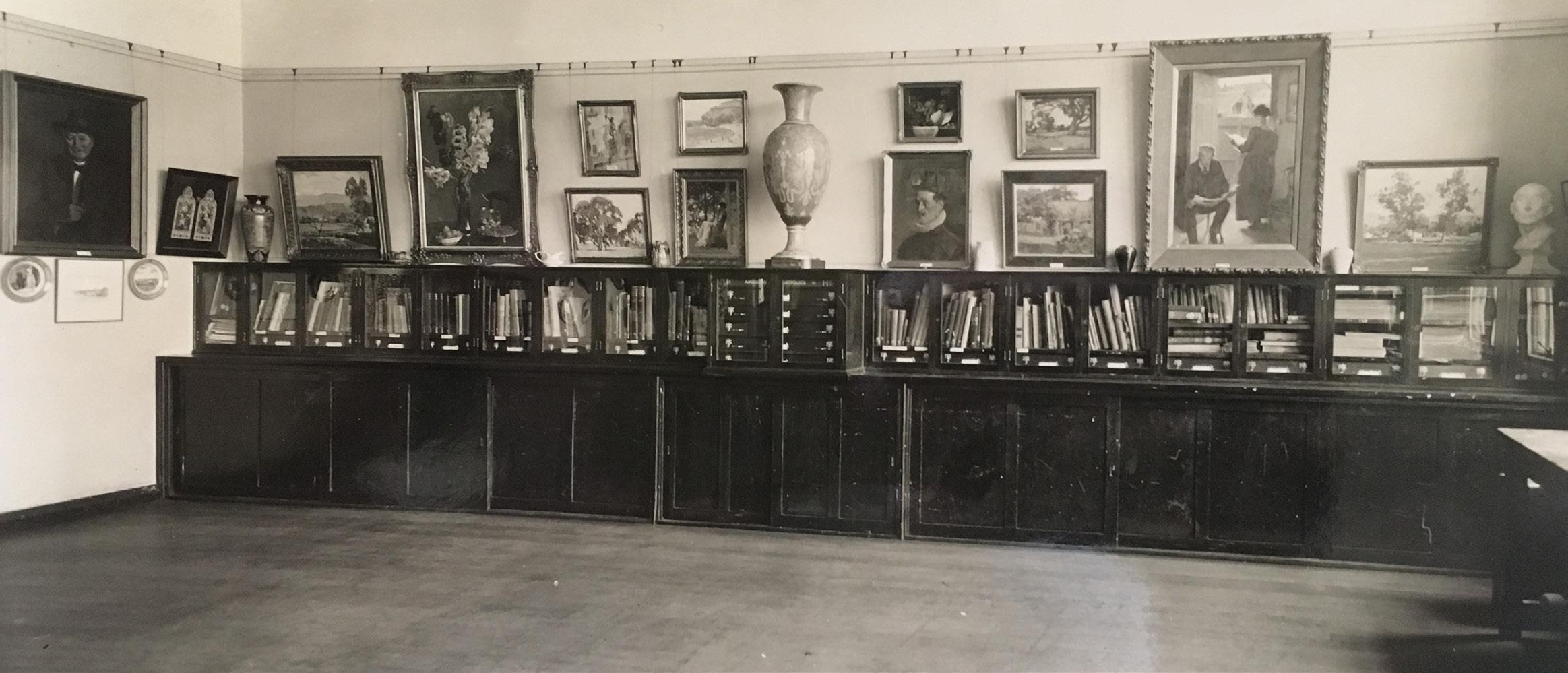
MTTC educational library museum, with a collection of ‘over twenty thousand volumes’ (The Age, 1889, p. 13), and holding ‘every educational journal of worth’ from around the world, even offering a circulating department that posted materials to students and teachers throughout the French Republic (Monroe, 1896, p. 387).
Sadly, there is no record of accession for any of these original items to the MTTC library museum, and the newly opened building, purpose-built for teacher training, was shuttered within five years due to the 1893 economic depression. While many of the resources of the building were sold off to the new owners, the educational museum and library were eventually revived by Frank Tate, when the building was once again opened as a teachers’ college in the early 1900s. The Sèvres vase, though, had a different journey through educational institutions, since it re-emerges in the public record in the 1930s in connection with a Melbourne High School art room and museum.
In 1938, Melbourne High School (then Melbourne Boys’ High School) established an art gallery and museum as the ‘centre of the artistic life of the school’ (The Age, 1938, p. 6). This new art museum was part of a broader initiative funded by the Carnegie Corporation of New York, which provided grants to develop school-based art libraries in Victoria. Melbourne High was one of two schools selected to house these specialist collections. The art room, as a hybrid library and museum, was intended to model best practice and extend access to resources across the education system. Teachers borrowed books and materials; students studied objects firsthand.
Fitted with cupboards and cabinets, the new Melbourne High art room was filled with objects through the efforts of art teacher
Mr Mills, who wrote to consulate officials, artists and education contacts in England and other European nations. The collection, according to both the ledger and the photographs, included an impressive display of art books, as well as paintings, decorative art objects and sculptures, and numbered upwards of 143 items. Among the lines of the ledger book are listed vases, plates and cups from Royal Doulton, Limoges plaques, a bowl from Ancient Greece, and listed in January 1938 is an ‘Egg Vase — Sèvres Porcelain’ from the Education Department (Melbourne High School).
Looking at the images labelled as ‘Art Gallery and Museum’ in the Melbourne High archives provides some insight into how objects and books in the art room functioned as tools to facilitate an educational pragmatism. The examples pictured closely follow the work of educational philosophers, such as John Dewey, who positioned the library and educational museum as ‘conduits’ to help pupils experiment and test out the theories of art, music, nature and science (Attebury & Kroth 2012, p. 52). In the images, we can see teachers (presumably now trained at the MTTC) showing these objects to students who study them as exemplar objects of art and porcelain, including the Sèvres vase, which sits in pride of place on the cabinets at the back of the room. A symbolic gift from France, now housed in a free, secular school, and an exemplar used for training and teaching.
By the 1940s, the art room museum at Melbourne High had been dismantled, the school was requisitioned during the Second World War, and the collection was never reinstated. The vase, moved to a hallway display, was accidentally broken in the 1970s, and today only
For library professionals, this history serves as a reminder of how libraries were instruments of reform, spaces for experimentation, and tools for professional identity.
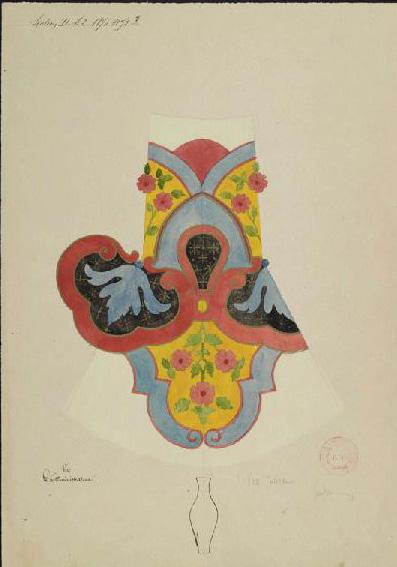
its base and metal stand remain, housed quietly in the school’s archive. The base gives a glimpse of the magnificent object that the vase once was, with a plaque that reads: France to Victoria, Centennial International Exhibition, Melbourne 1888 (see image on page 13).
The history of the MTTC library is more positive than that of the Melbourne High art museum. The MTTC was revived under the direction of Frank Tate, under the new name of Melbourne College of Advanced Education. Photographs from this period show a room with shelving and large tables for study and collaboration. It is not clear where the library was housed in this next iteration of the college, but the space offers proof of the ongoing mission to professionalise teacher education, and create a ‘rapport’ between teaching in theory and teaching in practice, as espoused by Pearson in the 1880s (Pearson cited in Buisson, 1889, p. 525), and further developed by John Dewey (Dewey, 2009).
For library professionals, this history serves as a reminder of how libraries were instruments of reform, spaces for experimentation, and tools for professional identity. Their design reflected pedagogical commitments that linked theory with practice, and international influence with local ambition. For the library history lover, our experience demonstrates that mere traces of a long-lost collection can help unravel the libraries of the past and retell stories of change and growth within a profession, where even a broken remnant preserves the story through its ‘biographical entanglement’ across people, places and events (Joy, 2009, p. 541).
Resources
Attebury, R & Kroth, M (2012). ‘From pedagogical museum to instructional material center: Education libraries at teacher training institutions, 1890s to 1970s’, Education Libraries, 35(1–2), 48–58.
Buisson, B (1888). ‘Letter from the ministry of public instruction and fine arts to the national manufacturer of porcelain, Sèvres’, unpublished letter, Archives MNS, U10/1, Liasse X, Dossier 4, Correspondances concernant un vase de Sèvres envoye a Melbourne pour l’Exposition Universelle de 1888–1889, Sevres- CitedelaCeramique, SCD, Sevres, France.
Buisson, B. (1889), ‘L’exposition Universelle de Melbourne’, Revue Pedagogique, June 1889, 524–537.
City of Melbourne (2017). ‘Sèvres vase 1880’, City Collection, available at: http://citycollection. melbourne.vic.gov. au/sevres-vase.
Clark, N (1937). ‘Correspondence to Mr Mills at MHS regarding a Sevres vase’, Unpublished Record Book Section: Replies to Correspondence Re Art Room, Melbourne High School Archive, South Yarra, Victoria.
Dewey, J (2009). The school and society and the child and the curriculum, BN Publishing, US.
Executive Commissioners for the International Centennial Exhibition Melbourne 1888 (1890). Official record of the Centennial International Exhibition, Melbourne, 1888–1889, Sands & McDougall, Melbourne, available at: http://handle.slv.vic.gov.au/10381/298715.
Fuchs, E (2009). ‘All the world into the school: World’s fairs and the emergence of the school museum in the nineteenth century’, in Lawn, M (Ed.), Modelling the future: Exhibitions and the materiality of education, Symposium Books, London, 51–72.
Garden, D (1982). The Melbourne teacher training colleges: From training institution to Melbourne State College, 1870–1982, Heinemann Educational Australia, Richmond.
Joy, J (2009). ‘Reinvigorating object biography: Reproducing the drama of object lives’, World Archaeology, 41(4), 540–556.
Lawn, M (2009). ‘Sites of the future: Comparing and ordering new educational actualities’, in Lawn, M (Ed.), Modelling the future: Exhibitions and the materiality of education, Symposium Books, London, 15–30.
Melbourne High School, Organisational data: Extracurricular activities, Unpublished Record Book, Melbourne High School Archive, South Yarra, Victoria.
Monroe, WS (1896). ‘Museums and libraries of Europe’, Educational Review, 11, 374–391, available at: www. forgottenbooks.com/en/books/ EducationalReview_10006901.
Public Library, Museums and National Gallery Victoria (1889). Report of the Trustees of the Public Library, Museums and National Gallery of Victoria; with statements of income and expenditure, Government Printer Schedule IV, Melbourne.
Sweetman, E (1939). History of the Melbourne Teachers College and its predecessors, Melbourne University Press, Melbourne.
The Age (1888). ‘Supplement — The centennial international exhibition: introductory’, 25 September, 1.
The Age (1889). ‘The French educational museum’, 16 March, 13.
The Age (1938). ‘Melbourne High School: Elastic course of training’, 21 December, 6.
University of Melbourne Archives (1888). 1888 Bldg — foundation ground and first fl plan new training college, university grounds, Melbourne University digital asset A198.4101, A1981941021.PDF, Carlton.
Victorian Parliament (1878). ‘Public education: Royal commission of enquiry: Report on the state of public education in Victoria and suggestions as to the best means of improving it’, (CH Pearson) Parl. Paper GP V 1877/78, no. 105, available at: www.parliament. vic.gov.au/papers/govpub/VPARL187778No105.pdf.
Victorian Parliament (1889). ‘Education: Report of the minister of public instruction for the year 18889’, (CH Pearson) Parl. Paper no. 98, available at: www.parliament.vic.gov.au/vufind/ Record/66221.
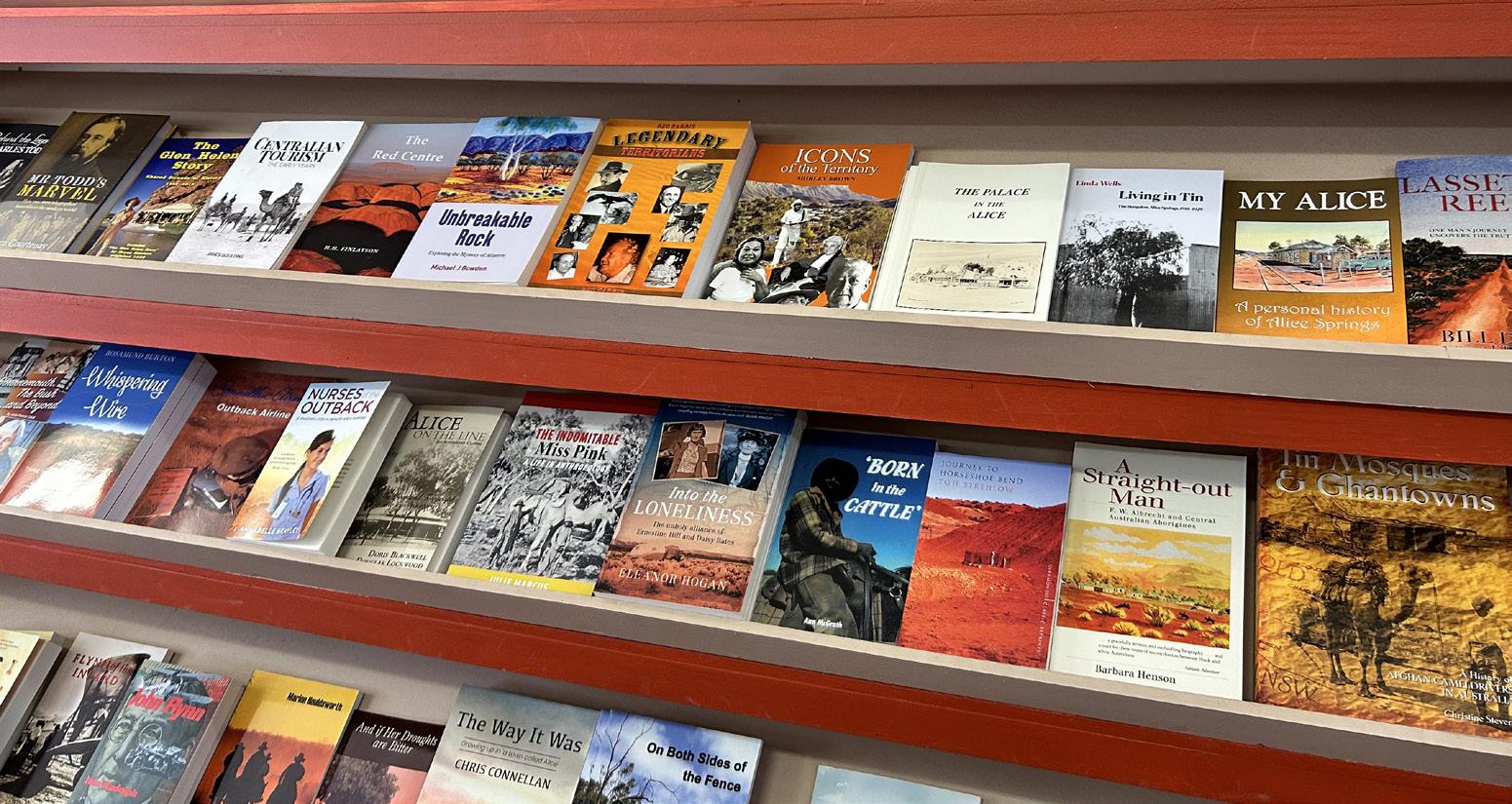
As the national professional body for the library and information sector, ALIA is deeply committed to truth-telling, reconciliation and the recognition of Aboriginal and Torres Strait Islander knowledges. To support and strengthen this commitment, ALIA, in partnership with the Jumbunna Institute for Indigenous Education and Research at the University of Technology Sydney, has launched a new professional development course: ‘Respect and Recognition of Aboriginal and Torres Strait Islander Peoples, Cultures and Country in Australian Libraries’.
This foundational course is designed to help library staff build their understanding of Aboriginal and Torres Strait Islander knowledges, cultures and connections to Country, and to embed cultural respect and recognition into everyday library practice. In an era marked by increasing racism — highlighted by the 2024 Australian Reconciliation Barometer’s finding of a 40% rise in reported incidents of racial discrimination experienced by Aboriginal and Torres Strait Islander people over the past decade — this course offers a much- needed and timely path forward.
Indigenous-led and community-informed The course has been shaped by the Jumbunna Institute’s Indigenous Archives and Data Stewardship Hub, led by Dr Kirsten Thorpe, and informed by the contributions from Aboriginal and Torres Strait Islander academics and library professionals from around the country and the ALIA Aboriginal and Torres Strait Islander Expert Group.
We would also like to thank Dr Monica Galassi and Dr Lauren Booker from
‘We really believe that libraries have a leadership role to play in supporting truth-telling and reconciliation in Australian society.’ Dr Kirsten Thorpe
Jumbunna for their significant work on this project and Gary Lom, Library and Information Management educator and instructional designer for his work in bringing the course to life online.
‘It has been a real privilege to work collaboratively to develop this course,’ said Dr Thorpe. ‘We especially want to thank the contributors for sharing their journeys and expertise — and the ALIA Expert Group for helping shape the course from start to finish. Their vital expertise, lived experience and professional knowledge grounded the course in community priorities and aspirations.’
As an Indigenous-led research institute, Jumbunna’s values are rooted in supporting self-determination and sovereignty. ‘We really believe that libraries have a leadership role to play in supporting truth-telling and reconciliation in Australian society,’ Dr Thorpe said.
She also highlighted the role of libraries in emerging areas such as Indigenous data sovereignty and Indigenous librarianship. ‘As information workers, the sector is strongly placed to assist the emerging Indigenous data sovereignty field, and more broadly, to support the field of Indigenous librarianship.’
While the course is designed for the Australian library and information workforce, it also holds value for international colleagues interested in building cultural capability and respectful practice.
Participants will explore concepts such as cultural protocols, Acknowledgment of
Country, and the significance of Indigenous knowledges and histories in the library and information environment. Practical steps for further learning and reflection are woven throughout the course, supporting culturally safe practice, inclusive collections and respectful community partnerships.
It is a self-paced course, delivered online, and can be started any time. With a combination of text, videos, guided reflections and short quizzes, participants are encouraged to engage deeply with the course content and take their time with the new learning. Fifteen CPD hours is the recommended time allowance for course completion; however, this can be more or less depending on the individual.
The course also supports ALIA’s Framework of Skills, Knowledge and Ethics, with a focus on Core Domain 2: Respect and Recognition. It empowers library staff — regardless of qualifications or role — to reflect on their responsibilities, deepen their understanding and contribute meaningfully to reconciliation.
‘We hope this course inspires all libraries to give voice to local Elders, acknowledge their knowledge and connection to land, and celebrate First Nations cultures across the nation,’ said ALIA President Jane Cowell. ‘It’s about embedding recognition into everyday practice, not as a one-off action, but as part of our ongoing professional responsibility.’
To learn more about the course or to register, click here
Transform your community into global citizens.
Empower learners to explore a new language at the library, at home, or on the go using any Internet-connected device. Available in 120+ languages, including English, learners have the flexibility they need to learn a new language anytime, anywhere.
Features users love in the most complete language-learning system for academic libraries
120+ languages (and growing!)
From Afrikaans to Zulu, the number of languages available to learners is constantly growing.
Alphabet lessons:
You can't learn to read or write if you don't know the alphabet. Get learners started on the right foot with our Alphabet course.
Flexible learning path:
Learners can follow our plan or explore their own. The choice is theirs.
Extensive English collection:
300+ hours of English, from beginner courses taught in 30+ languages to intermediate and advanced conversation courses.
Contact Gale - o cial ANZ Distributors: anz.galeglobaltech@cengage.com or visit www.transparent.com/libraries
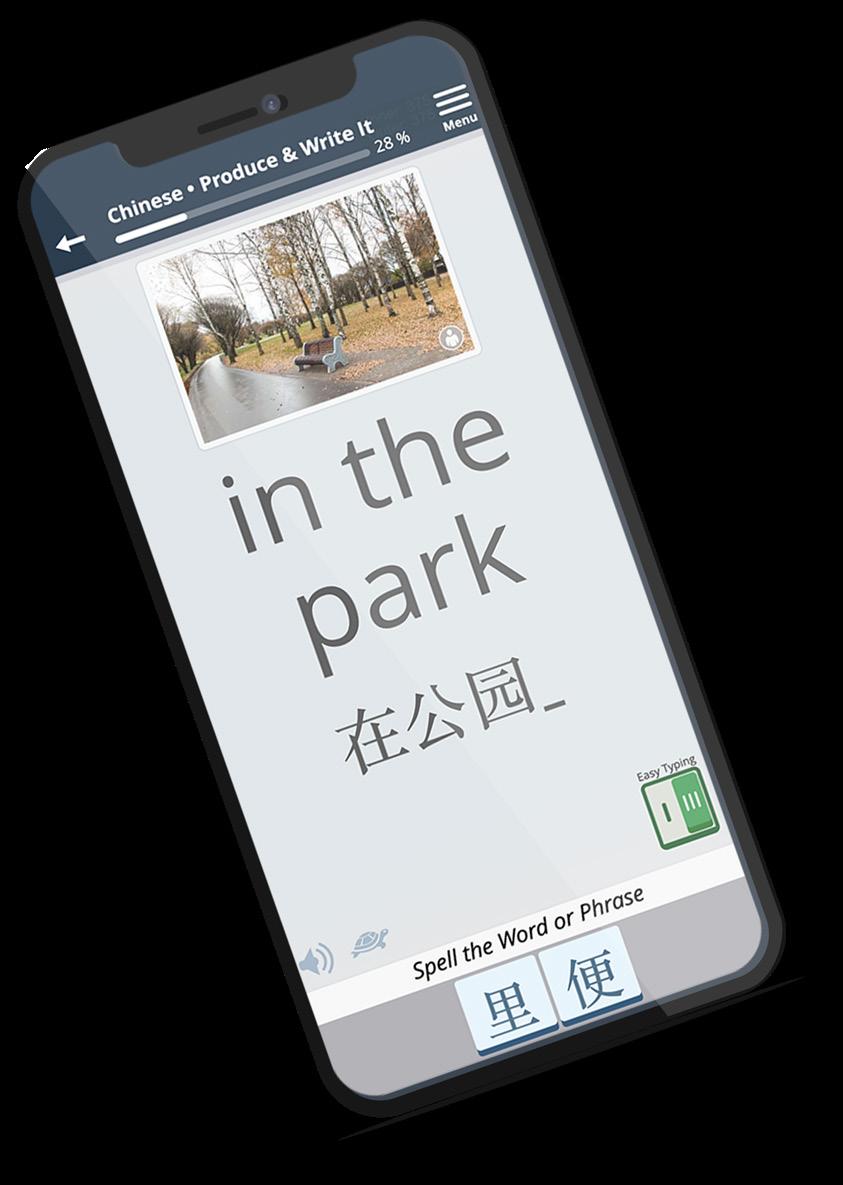
25+ learning activities:
Interactive learning activities encourage learners to practice all four modalities: listening, speaking, reading, and typing.
Focus on a specific skill:
Listening, speaking, reading, and writing are all part of the language puzzle. Learners can pick any skills-based learning activity, select their desired vocabulary, and instantly launch a custom lesson.
Learn on the go:
At the library, at home, and everywhere in between, access to lessons is possible on almost any device, including full-feature mobile apps for iOS and Android™ tablets and phones.

By Rebecca Eley, PhD candidate, Charles Sturt University
When I first saw the call for applications for the Charlotte Henry Study Grant, I paused to consider whether I should apply. At the time, I was undertaking a second master’s degree, building on earlier studies to prepare for a PhD. Although I wasn’t actively seeking awards or recognition, the application process was clear and manageable, and I felt that my research aligned with the award’s purpose — so I decided to take the opportunity.
A few weeks later, I was delighted to receive a phone call informing me that I had been selected as the 2024 recipient. It was an unexpected and a deeply appreciated honour.
The award certainly provided valuable financial support, but more significantly, it affirmed the importance of my research and gave me renewed confidence in the path I am pursuing. It was a reminder that others see value in my work and that my research matters.
My research explores the role of rural public libraries in delivering home library services — something I feel is both underexplored and deeply important. My paper, ‘The provision of home library services in rural Australia’, was recently published in the Journal of the Australian Library and Information Association.* It examines how these services identify and support individuals who are unable to physically access a library, and it highlights their role in addressing social isolation in regional and remote communities. I’d like to take this opportunity to thank the many librarians and staff members who took the time to complete the online questionnaire — the paper couldn’t have been written without your input and I’ve quoted many of you throughout the paper.
While my focus is on rural Australia, this is not solely a rural issue. Across the country, many people experience chronic loneliness and disconnection. Home library services
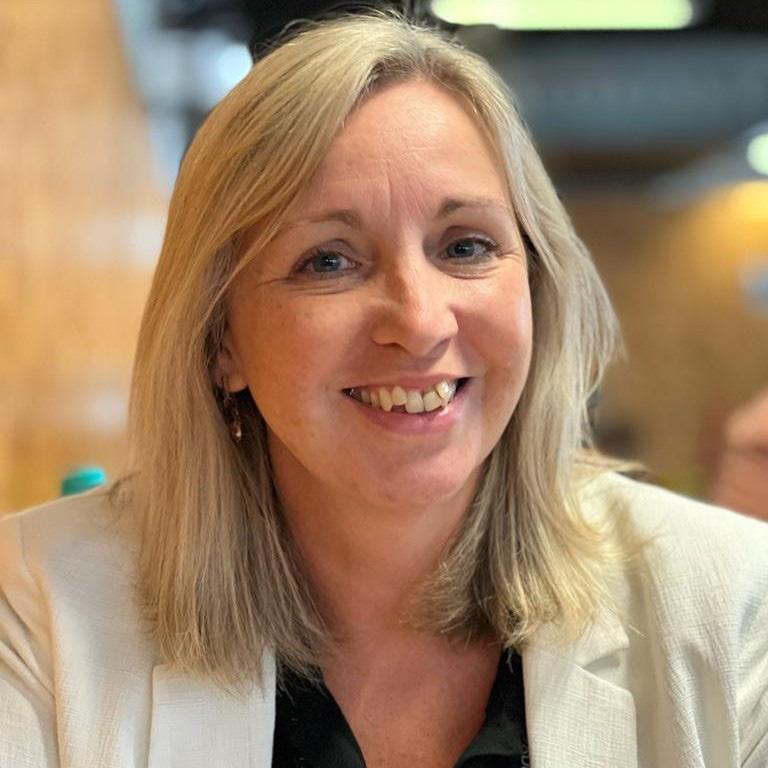
do more than provide access to books; they foster regular human interaction and a sense of belonging.
This research will now form part of my doctoral studies at Charles Sturt University, where I continue to investigate how libraries contribute to equitable access, wellbeing and community connection in rural and remote areas.
If you are considering applying for the Charlotte Henry Study Grant in the future, I encourage you to do so. Awards like this are not just a form of recognition — they are an investment in ideas that have the potential to make a real difference.
If you’d like to learn more about the Charlotte Henry Study Grant or any of ALIA’s awards, head to our website.
*DOI: 10.1080/24750158.2025.2461819

By Renate Beilharz
ACORD member; Catalogue Content Manager, SCIS
Every school that has a library management system uses catalogue records. These records help school libraries with administrative tasks like stock control (circulation and shelving). More importantly, catalogue records assist the end users (students, teachers, library staff) with finding and locating resources that meet their needs.
School library users, both staff and students, are beneficiaries of a well- maintained catalogue, but very few understand the work, skills and knowledge that goes into cataloguing. It is a backroom task that does not receive much publicity or fanfare.
Talking about cataloguing, understanding cataloguing and undertaking cataloguing is sometimes seen as a ‘specialist’ skill. Even so, every library staff member interacts with the catalogue as soon as they touch the library management system. Also, in every library there is at least one person who has the responsibility for importing, adjusting, modifying and creating catalogue records in the system.
Catalogue records are created to specific standards, ensuring that search
results in library catalogues are relevant and useful to end users. These standards are not static; they adapt to meet the changing needs of society and technology. Cataloguing in school libraries relies on those standards, but may be adjusted to meet the needs of the school library community.
Staff maintaining a school library’s catalogue are often working on their own and have little opportunity to talk ‘cataloguing’ with others — enter the Schools Cataloguing Community of Practice (SCCoP).
The purpose of the SCCoP — an initiative of the ALIA Committee on Resource Description (ACORD) — is to provide a vendor-neutral forum to encourage discussion and sharing on any aspects of bibliographic metadata and information discoverability in school libraries. It is open to anyone with an interest in bibliographic metadata for school libraries in Australasia.
The objectives of the SCCoP will vary over time but may include:
• to identify, gather and share effective bibliographic metadata practices in school libraries
• to provide a point of contact for Australasian school library staff to ask questions and discuss issues of relevance to bibliographic metadata
• to report on developments in international bibliographic metadata that could impact discoverability of resources in Australasian school libraries.
ALIA and ACORD invite you to join the SCCoP. Online meetings will be held four to eight times a year, with a communal online space provided for ongoing conversations and notifications.
The first meeting was held on 27 August, starting with a short presentation on the reparative cataloguing initiative undertaken by Abbotsleigh School Library, followed by animated discussion.
To join the SCCoP , send an email to education@alia.org.au, with ‘Schools Cataloguing CoP’ in the subject line. Please include in the body of the email your institution and, if you like, a few words about why you’re interested in joining the group.
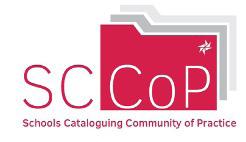
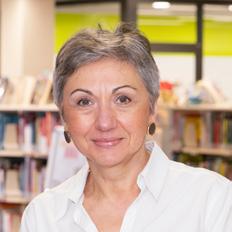
By Dr Suzana Sukovic, Director of College Research, Presbyterian Ladies’ College Sydney
All young people in Australia receive education about e-cigarettes, alcohol and drugs at school from Year 5 to Year 10 (ages 10 to 15), alongside a wealth of information from outside the classroom. Yet, many still vape, drink and use drugs. This disconnect between knowledge and behaviour is not new — but the complexity of today’s world, particularly in the postCOVID-19 era, and emerging trends in substance use, highlight this gap with new urgency. According to the Australian Institute of Health and Welfare, young women in Australia are now using alcohol and illicit drugs at increasing rates, closing the gender gap for the first time. Vaping is also on the rise, with uptake beginning at younger ages. While substance preferences may differ, the growing global trend of polysubstance use — where multiple substances are used concurrently — is especially concerning, due to its increased health risks and the potential for impulsive decision-making.
In light of this gap between learning at school and real-life choices, Dr Tony Stojkovski (Assistant to the Head of Curriculum at Presbyterian Ladies’ College Sydney) and I wanted to understand young people’s perspectives on substance

use, aiming to improve education and information around the topic. We were fortunate to receive the ALIA Research Award in 2022 for the project ‘Adolescents’ recreational substance use and epistemic wellbeing’. In 2023 and 2024, we conducted a survey and facilitated class and focus group discussions with female students from Year 9 to Year 12, as well as with young women who had finished school within the previous two years. Our aim was to explore their opinions, attitudes and experiences within their peer groups. Nearly 500 young women completed the survey, and approximately 100 participated in the qualitative components of the study.
Here are some key outcomes, conclusions and key messages from the study.
Young women want to be treated as people capable of making informed decisions — especially when it comes to their health and safety. They consistently emphasised that safety should be the priority in substance education, and that it should be delivered in a way that respects their autonomy.
‘It’s acknowledging us as people who make decisions rather than like children who just need to be educated.’ — Participant, Year 10
‘Parents think that safety is number one. And I think that should be the same in school — that safety is a priority.’ — Participant, Year 12
Families shape early thinking
While young women receive information from a variety of sources, families and friends remain the most prominent influences. For younger adolescents in particular, family conversations, personal stories and modelling of responsible behaviour have a lasting impact. Some families choose not to discuss substance use, believing their children won’t engage in it — but adolescents in the study felt this silence was unhelpful, as they frequently witness substance use in their environments.
Friends influence decisions
Participants clearly differentiated between influences on their thinking and influences on their decisions — highlighting friends as the dominant force behind decision-making from Year 10 onwards. By Year 12, three in 10 students had not seen substance use among their peers in the past six months, but none of the post-school participants selected ‘never’ as a response. More than half had witnessed substance use weekly or even daily. Many saw substance use as a normal part of growing up. The COVID-19 pandemic disrupted usual social transitions, leading to a sudden shift from childhood activities to more adult-like social behaviours, without the gradual ramp-up previously typical.
A mixed experience of school education
Adolescents valued information from independent, external sources — especially when delivered by skilled guest speakers. While many school-aged participants questioned the relevance of school-based drug education, post-school participants reflected on how important it had actually been, especially since no structured information was available after school.
At university, drug-related content in coursework was often seen as theoretical and disconnected from lived experiences — sometimes even clashing with the norms they observed in certain professional fields.
Online information: quick, but unverified
Older adolescents rarely seek out information online, and when they do, they typically rely on quick searches without verifying results. Ads and awareness campaigns are generally dismissed as inauthentic. However, participants responded positively to honest conversations and real-life stories — especially when shared by trusted educators or relatable media figures.
While younger participants noticed portrayals of substance use in film and TV, older participants saw these depictions as unrealistic and disconnected from their own lived experiences.
What does this mean for library and information professionals?
Adolescents’ health and wellbeing depend on well-informed young people who must be supported holistically through collaboration across society. This is a strong message that came last year from the World Health Organization and health professionals such as Australian Professor Susan Sawyer. With information and education as key aspects of holistic support, information professionals in health and librarians who work with young people have an important role to play in renewed efforts to tackle substance use.
Adolescents are unlikely to go directly to a librarian to ask for information about substance use, but we can still make a major contribution, primarily by providing holistic information services. A quarter of a century ago, a pioneer in researching adolescent drug use in library and information studies, Professor Ross Todd, wrote this in his article ‘Utilization of heroin information by adolescent girls in Australia: A cognitive analysis’ (JASIS, 1999, 50/1, p. 22): The study shows that no matter how compelling or authoritative information might be in the minds of others, no matter how useful someone else might think the information is, these qualities do not guarantee its receptivity and utilization by adolescents.
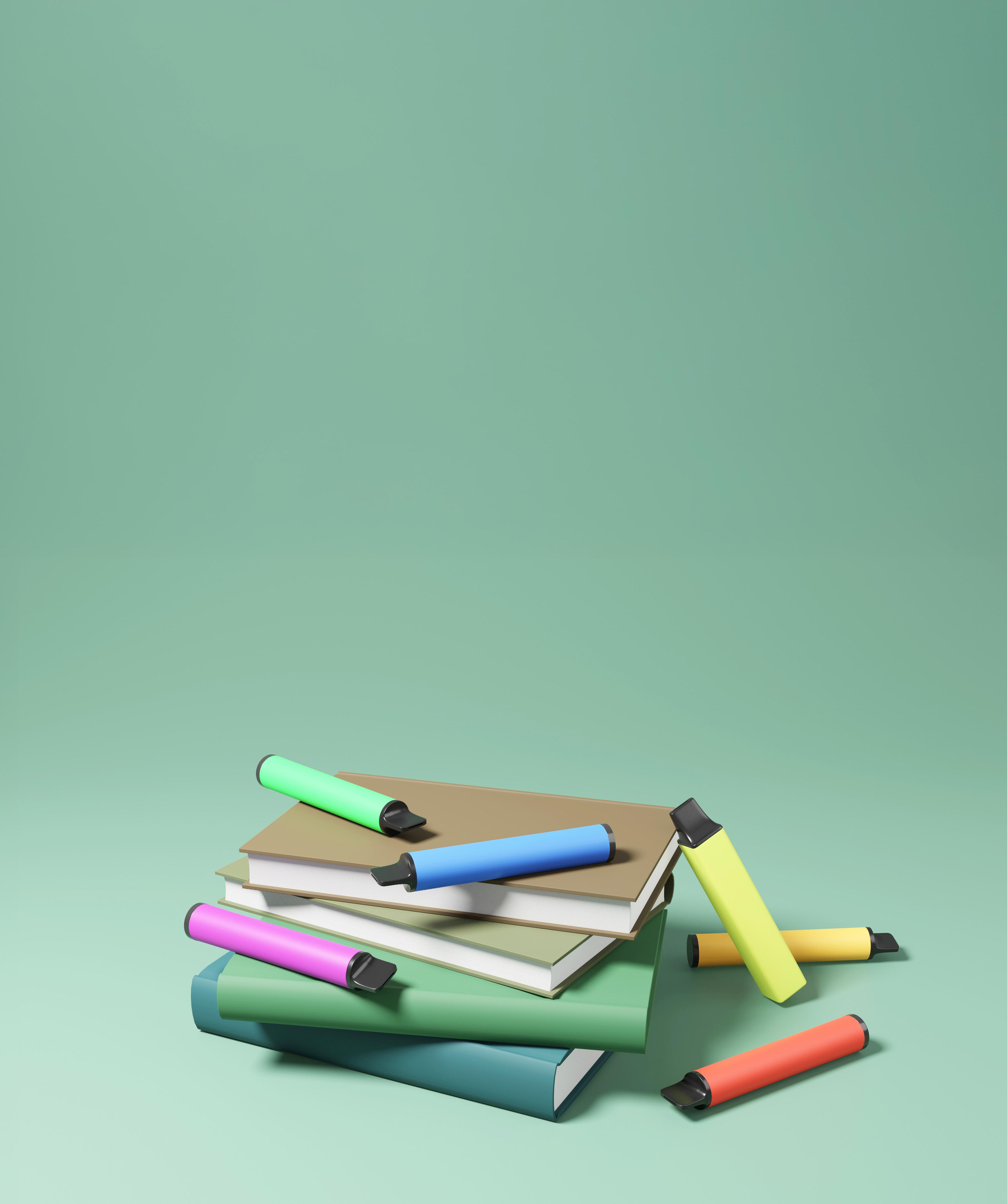
Although much has changed over the past 25 years, Professor Todd’s conclusion is still true today. To make young people receptive to trustworthy information, their information needs must be considered and met by taking into account rational, emotional, social and cultural aspects of their information behaviour and life choices.
Public and school libraries already have some useful programs and services. Further engagement with local communities to develop a good understanding of local trends and needs would lead to more targeted services. Collaboration with other sectors and industries may lead to the development of new programs and digital tools for particular needs. Libraries can also facilitate communication between young people and experts. The main element in all our efforts is the willingness to listen to sometimes uncomfortable truths and be attuned to changes as adolescents find their own unique ways of growing into adults. Listening to young people’s authentic voices and inviting them to collaborate with us is a good start.
By Marianna Shek Author and Research Librarian, Brisbane Grammar School
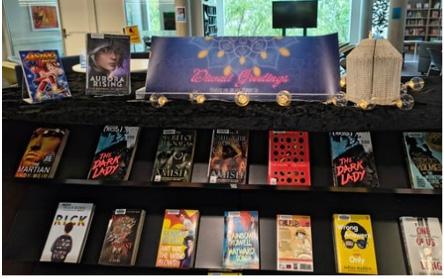
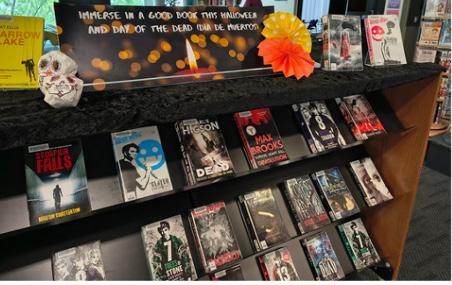
Reader advisory is a cornerstone of librarianship, and the themed book display remains one of our most visible and effective tools for connecting readers with new titles. In my experience as both a librarian and a lifelong library user, I’ve seen the impressive creativity and effort that goes into designing these displays. However, this visual flair isn’t always matched by the depth of content curation behind the scenes. Selections often draw from trending titles — such as those popular on BookTok or Goodreads — while opportunities to spotlight diverse voices or BIPOC (Black, Indigenous and People of Colour) authors are sometimes missed, unless tied to a specific cultural celebration or awareness event.
The goal
While working in public libraries, I sought to feature more diverse titles in book displays, aiming to broaden representation and reflect the richness of our communities. These efforts were sometimes met with hesitation from colleagues, who expressed concern that patrons
might not engage with books they felt they couldn’t relate to. When I raised questions about this approach, I was referred to ALIA’s ‘Standards and guidelines for Australian public libraries’, which state that collections should ensure ‘currency, accuracy, quality and appeal, as well as [a] continued ability to meet community demands’. In practice, ‘community demands’ were often interpreted through local census data from the Australian Bureau of Statistics, which shaped how diversity in collections was understood and prioritised.
Having had this experience, I was especially keen to promote diverse stories in my current role as Research Librarian at Brisbane Grammar School, through the intentional curation of titles for book displays. When I initially joined Brisbane Grammar Libraries, the Senior Library Technician, Deborah Rawson, had set up a process where team members would propose marketing themes for book displays a term ahead of time. Decisions on themes were based on pre-existing student engagement, personal staff interest and the curriculum. From the beginning, our library team was enthusiastic about promoting cultural and diverse activities.
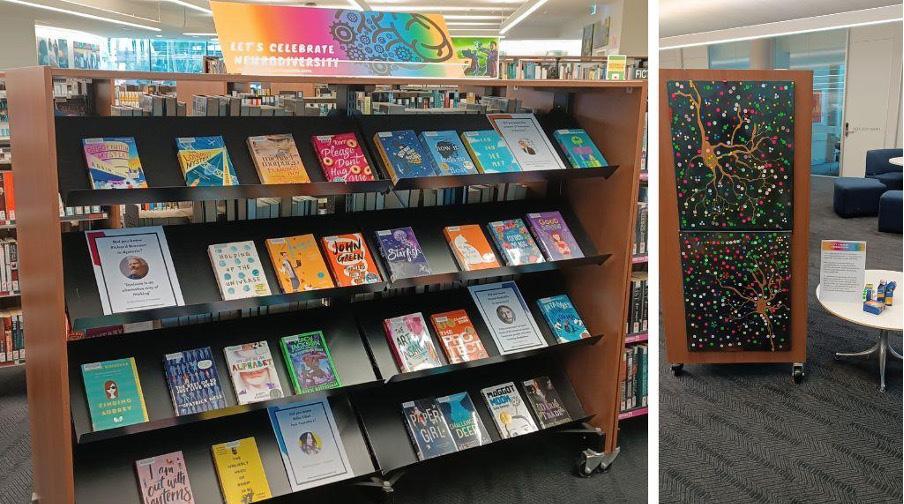
The Neurodiversity Celebration Week book display by Senior Library Technician Deborah Rawson. Accompanying display shows two canvases for students to decorate with coloured dots to create an artwork to represent neurodiverse thinking. Photos: Supplied
As we learned, however, enthusiasm alone is not enough to drive borrowing. For the Día de Muertos display, I created props, signage and papier-mâché sugar skulls for students to decorate, then put them on display. After a couple of weeks, many students had designed skulls, yet no one had borrowed any books. Similarly, for my Diwali display, students were enthusiastic about making candles from old books to decorate the shelf, but they did not engage with the titles being promoted.
On reflection, my well-meaning Día de Muertos and Diwali displays didn’t achieve their intended outcome because I had not reviewed the library’s book collection. Despite the Día de Muertos accoutrement, the only books available to display were typical horror genre offerings such as the Five nights at Freddy’s and Hellboy comics. Likewise, the Diwali end-of-year display promoted light summer reads, which poorly matched the theme and did not evoke curiosity or inspire debate.
Happily, we were able to take those lessons learned into the display we created for Neurodiversity Celebration Week. Our Senior Library Technician collaborated with a library patron who is also a passionate advocate for neurodiverse representation. Their personal experience with neurodiversity and teen readership provided an authenticity to the curated titles. The resultant book display had functional signage but did not rely as heavily on props or add-on interactivity. Its strength lay in informative didactics, QR codes linking to our library’s LibGuide on neurodiversity, and a collection of relevant and engaging fiction and non-fiction titles on autism, ADHD, dyslexia, dyspraxia and Tourette’s. The effort expended curating an insightful collection opened conversation and resulted in more patron loans than did bolder, brighter, craftier book displays.
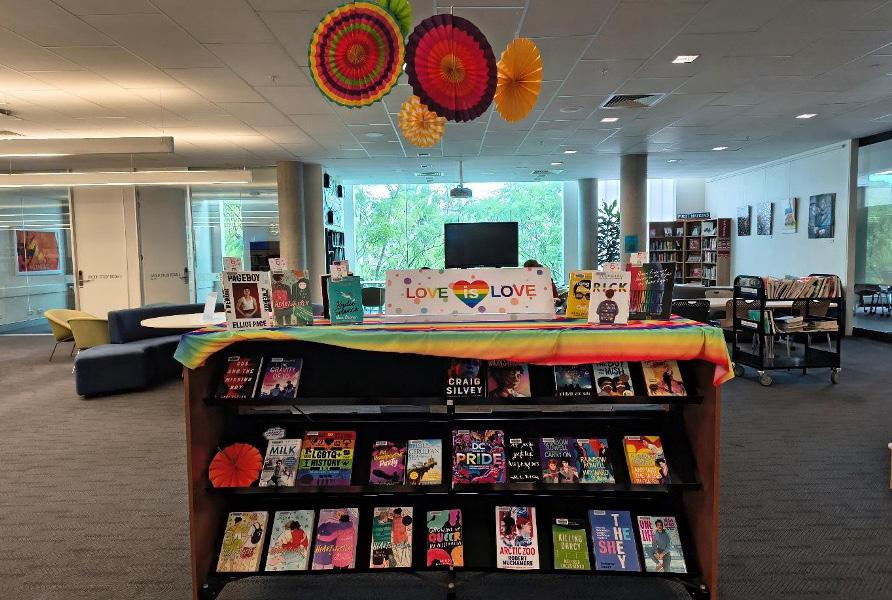
Well-intentioned theming of book displays does not organically convert to effective promotion of marginalised experiences if libraries lack a diverse collection to support these book displays. The first step in creating book displays must be curation of titles and renewal of the collection to include diverse authors. I raised the idea of curation before creation at our library team meeting. Some of the staff members felt that this step was already an intuitive part of the book display creation process that did not need to be named; I believe that separating the steps will emphasise that curation is the process of intentional selection. In a society where everyone is curating everything from music playlists to online personas, it is important for librarians and library technicians to demonstrate their relevance by being experts at curating books before creating book displays. To assist staff in managing the extra time investment needed to add in a curation step, I created a list of current databases, book lists and critical book reviewers. I selected literary organisations and specialist publishers over individual reviewers and searched for young adult and middle grade titles using the hashtags #BIPOCstories #ownvoice #LGBTQI #neurodiverseexperiences #diversevoices #diversekidlit and #queerreads. I reached out to We Need Diverse Books, National
Centre for Australian Children’s Literature and Indigenous Literacy Foundation to check the currency of their databases and latest titles. To see my working list, please email me at marianna.shek@brisbanegrammar.com
ALIA is currently running a public awareness campaign called ‘Library transforms’ to spread the word about the impact libraries make every day. As I’m working on this article, I’m alerted that a student is missing from class and is somewhere in the library. I find him on a couch in the secluded back corner. He’s reading a book he’s picked up from our Pride ‘Love is Love’ display. I sit down and we have a conversation about the book display. Before I send him back to class, I offer to let him borrow the book. He declines but as he leaves, he says, ‘Tell Ms Rawson I really appreciate her display.’ This marketing campaign has not turned over a high volume of books. It is not a display that caters to popular demand, but I share this student interaction because it is the true measure of how libraries can transform a young person’s experience through the power of a well-curated book display.


By Gautami Motupally, Program Manager, Western Sydney Health Alliance
What if your next great discovery at the library wasn’t in a novel — but in a brochure about breast screening, a mental health session, or a friendly chat about diabetes prevention?
In the vibrant and culturally rich communities of Western and South Western Sydney — where 38% of residents are born overseas and more than 50% speak a language other than English at home — our libraries are more than just places to borrow books. They’re trusted neighbourhood anchors. And now, they’re becoming launchpads for healthier living.
Western Sydney faces significantly higher rates of preventable hospitalisations, lower rates of cancer screening, and higher levels of chronic illness than Greater Sydney. For example:
• in some local government areas, up to 7% of the adult population has diabetes, compared to the NSW average of around 5%
• mental health-related emergency visits are consistently above state averages
• breast screening participation is lower than the NSW target in many Western Sydney suburbs
• residents in these communities are more likely to experience financial stress, limited access to transport and lower health literacy — factors that further widen health gaps.
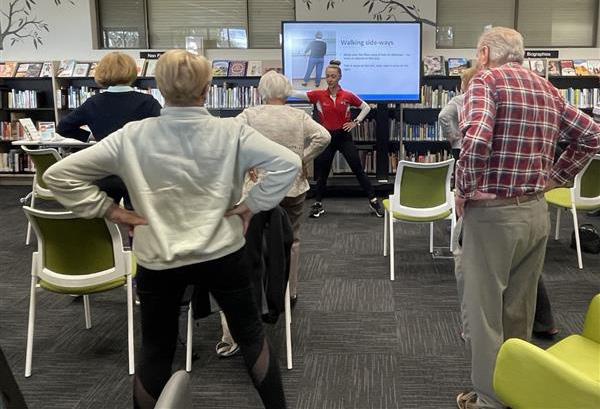
Introducing the Library Health Hub: a welcoming, inclusive space where health and wellbeing information is available to everyone, right in the heart of the community.
At the Western Sydney Health Alliance (WSHA), we believe health information should meet people where they already are. That’s why we’ve partnered with councils to embed health hubs into local libraries — community spaces that are already safe, familiar and easy to access.
Whether you’re navigating a chronic condition, curious about preventative health, or looking for support for a family member, your local library can be a starting point. And in communities where English
may not be the first language, these hubs play a crucial role in bridging gaps and empowering people to take control of their health.
Each hub is a thoughtfully designed corner of the library, stocked with pamphlets, fact sheets, digital resources and free workshops — all tailored to local needs. Topics range from mental wellbeing and healthy ageing to breast screening and navigating the healthcare system.
And because our communities are diverse, so are our resources. We include multilingual materials, easy-to-read formats and culturally appropriate health messages.

Our seasonal calendar keeps things relevant. March brings resources for NSW Seniors Festival. In June, flu prevention takes centre stage. July shines a light on type 2 diabetes. September focuses on women’s health, and October explores mental wellbeing.
But what makes these hubs special isn’t just the information — it’s the connections. We’ve seen grandparents discover community exercise classes and new migrants learn where to get vaccinations. Library staff report increased community engagement, and health providers have a new channel to reach those who might otherwise miss out.
Building a healthier future — together Preventative care starts with awareness. When people understand their options early, they’re more likely to seek help, make healthy choices, and reduce the risk of long-term health issues. The Library Health Hub is one simple, powerful way to plant
that seed — especially in communities where trust, familiarity and language support matter.
And no, library staff aren’t expected to be health experts. This model thrives through partnerships. Councils provide the space. Health organisations offer the content and expertise. WSHA brings it all together to ensure every community has access to the tools it needs to live well.
Library Health Hubs are currently available in selected libraries across Hawkesbury, Blue Mountains, Liverpool City, Camden and Campbelltown, with more on the way.
Next time you visit your local library for a book or a quiet moment, take a detour past the Library Health Hub shelf. You might find just the thing you didn’t know you were looking for.
Want to start your own? We’ve created a step-by-step guide to help your community build a Library Health Hub.
AUTHOR Gautami Motupally, gautami.motupally@WShealthalliance.nsw.gov.au

Purchase a turnkey VR solution and open up a world of experiences in your library — supporting older adults and people living with disabilities.

Libraries have always been a gateway to new worlds and now, thanks to virtual reality (VR), that gateway is more immersive than ever.
SilVR Adventures partners with libraries across Australia to deliver meaningful, engaging VR experiences.
Whether it’s wandering the streets of Italy, exploring coral reefs, or going on a wildlife safari, participants are transported far beyond the walls of the library.
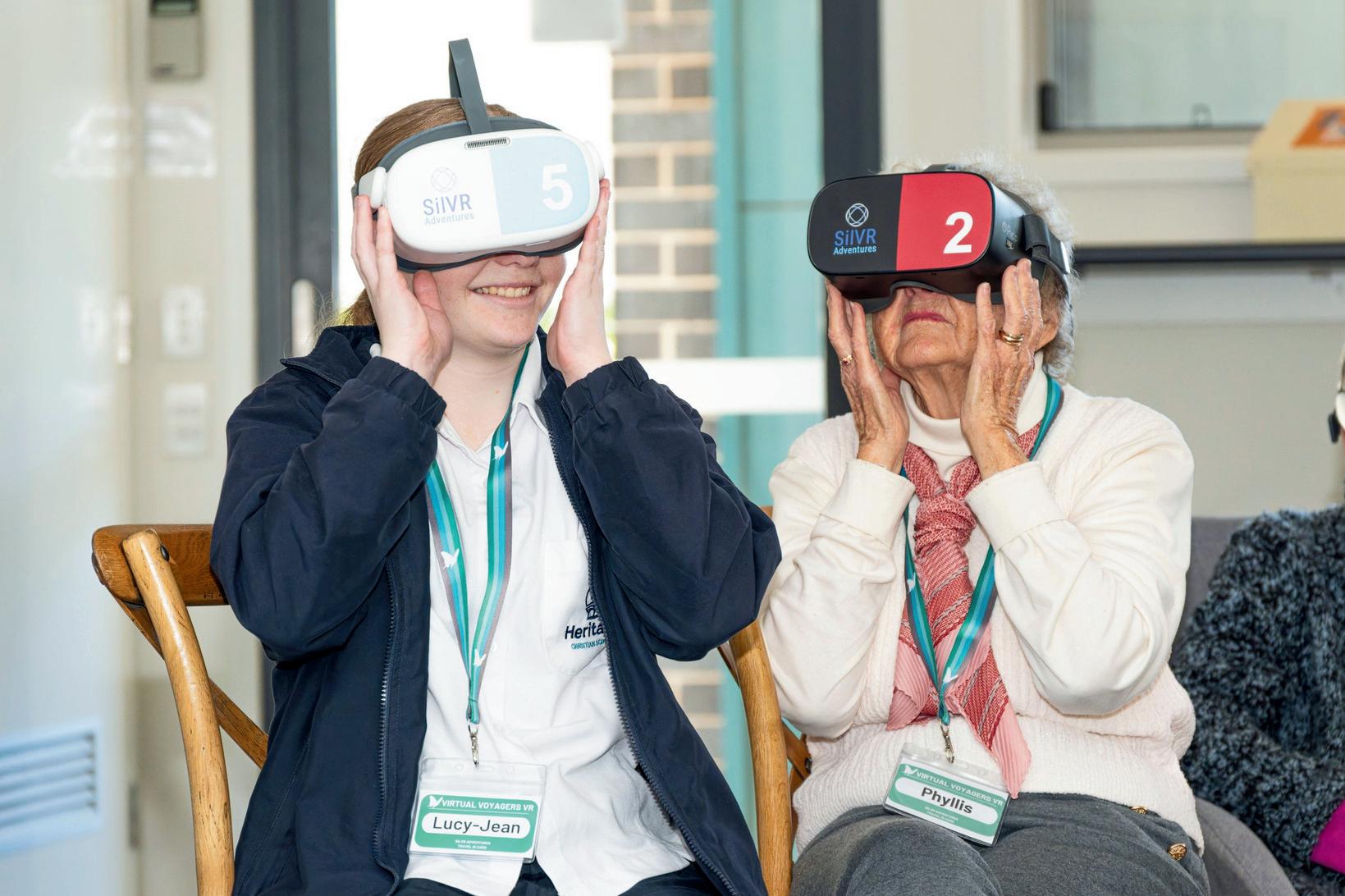
These sessions are easy for staff to run, thanks to SilVR’s training, support, and ready to use library of experiences. And the impact? Intergenerational connections, new discoveries, and long forgotten memories gently resurfacing.
Contact sales@silvradventures.com to discuss how we can best support your communities.



By
It can’t be denied that Australian libraries play an invaluable part in promoting reading and supporting research in Australia. But did you know that libraries play an active role in putting money into the pockets of book creators? In 2025, more than $28 million in payments were made to authors, illustrators and publishers through the Australian Lending Rights Schemes — all thanks to the work of libraries around Australia.
The Australian Public Lending Right (PLR) Scheme was established in 1974, ensuring that Australian authors would be paid a specific sum for each copy of their books available for loan from Australian public libraries. It also confirmed that libraries would not be expected to bear any of the cost involved and there would be no burden on local government resources or state government funds. In 2001, the Educational Lending Right (ELR) Scheme expanded the scope to educational library collections in schools, universities and technical and further education (TAFE) institutions. Most recently, in 2023, after campaigning by ALIA and the Australian Society of Authors and inclusion in Australia’s National Cultural Policy Revive, the schemes were extended to include ebooks and audiobooks.
How does it all work?
Every year, book creators and publishers submit details of their new books to the scheme. The Lending Rights team verifies and collates this information for the annual
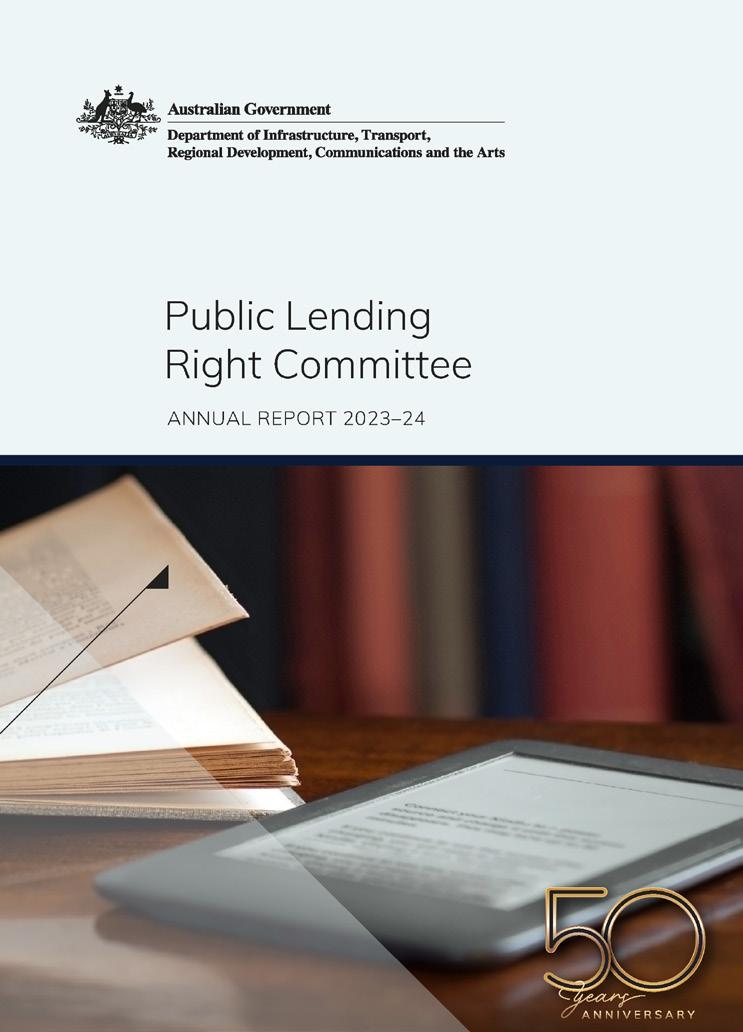
library survey — which is where libraries come in. Public, school, university and TAFE libraries from around Australia are selected to participate in the annual library survey and report on collection holdings for all titles in the scheme. These results are processed to deliver a score for each title, which estimates the number of copies held in public libraries (for PLR) and educational libraries (for ELR). The score is then used to calculate how much each creator and publisher receives in their annual PLR/ELR payments.
How can libraries get involved?
It’s simply not practical to survey every single library each year, so a representative sample of libraries is selected instead, and scores are weighted based on distribution. Each year, the Lending Rights team contacts public, TAFE and university library services to invite them to participate in the year’s survey. Education Services Australia (ESA) partners with Lending Rights to liaise with schools and gather data from school libraries. Either the library or their library management vendors pull data files containing details of their print, ebook and audiobook collections. Once the files are sent to the Lending Rights team, the final book scores and payments can be calculated.
Is it complicated?
Back in the 1970s, participating libraries worked with paper forms and hand-counted copies from their physical collections. Fortunately, in this digital age, most of the data needed can be gathered through automated processes. In many cases, particularly with public libraries, the Lending Rights team works directly with vendors who provide the data with the library’s permission. In other cases, often with educational libraries, the Lending Rights team provides step-by-step instructions on how to gather and prepare the data, whether it be for physical collections or digital ebook and audiobook holdings. In most cases, setting up the process and compiling the

results should take less than 10 minutes, with the processing time itself varying depending on your library management system and the size of the collection.
Clare Thorpe, Director, Library Services at Southern Cross University and library industry representative on the PLR Committee, highlights the valuable skills and experience that academic librarians can use in progressing the schemes. ‘Academic librarians know their collections and have the tools, skills and expertise to provide the ELR data. Academic librarians also have the relationships with vendors of library management systems and content providers and have a role in play in making these stakeholders aware of the importance of the ELR scheme in Australia.’
Why should your library participate in the survey?
Put simply, if your library participates in the survey, then the work will directly contribute toward supporting every Australian book creator who is represented in that collection. The more libraries that say yes to participating, the better the quality of data that the Lending Right Schemes will have that determines how much money an author receives. From emerging local authors to researchers in a specialised field, every library holding can make a big difference. For academic libraries, Clare says, ‘Collections should reflect the communities we serve; it is vital that higher education libraries
participate in the annual survey to encourage Australian writers and publishers to continue to create and invest in publications that examine and reflect Australia’s environment, society, laws and culture.’
Library survey aside, there are other ways that libraries can continue to support Australian creators through the Lending Right Schemes.
• Include Australian authors in your acquisition standing orders. Not only are you supporting them by purchasing their books early, but the sooner the books are added to your collection, the better chance their authors have of getting a higher score that contributes to their annual payment.
• Create and use quality library catalogue
Celebrating 50 years of Australian Lending Rights in 2024. Image: Office for the Arts

records, especially when uploading to the Australian National Bibliographic Database on Trove. The Lending Rights online system uses these records to verify book data, so having quality catalogue records is very important.
• Spread the good news about Lending Rights. Nobody should feel guilty about reading a library book instead of buying a copy. The Lending Rights Schemes are just another way that libraries support the Australian literary sector, along with celebrating book culture, developing readers and promoting lifelong learning in the community.
So, to the many libraries who have supported and participated in the Lending Right Schemes over the past 50 years — thank you! You are directly supporting the growth of Australian writing and publishing, and the schemes would simply not be possible without you.
Further information about the schemes can be found on the Australian Government’s website: Australian Lending Right Schemes (ELR/PLR)
CONTACT
Australian Lending Right Schemes Office for the Arts lendingrights@arts.gov.au

By Sue Cicolini, Library Branch Services Coordinator, Ipswich Libraries
For the past few years, the intrinsically inclusive nature of public libraries has been challenged through an increase in inappropriate and unreasonable customer behaviour. Staff across libraries of all sizes have been, and continue to be, confronted by offensive, selfish and even violent behaviour, resulting in negative impacts to their physical and psychosocial wellbeing.
At the Queensland Public Libraries Association conference in Townsville in March this year, Ipswich City Council Libraries and Customer Services Section Managers Cheryl Pye and Gail Seeney presented a lightning talk on how challenging customer behaviours were being managed at Ipswich Libraries through persistence and diversity in approach.
In mid-2022, Ipswich Libraries began to experience a significant increase in antisocial and difficult behaviour from customers at several of the branches. At its worst, these incidents were experienced by staff several times a day, ranging in severity from verbal profanity and abuse to property damage and sexual activity. On a couple of occasions, weapons were discovered.
The impacts of these behaviours were also felt by those customers who wanted to use the library spaces appropriately, the people library staff wanted to greet, help and support. It became clear very quickly that short-term relief was essential while working towards effective long-term change.
Library management defined core business priorities to determine response actions while, at the coalface, branch coordinators and team leaders built strong internal and external relationships to support these actions. The varying levels
and types of behaviours across locations indicated the need for a multifaceted yet tailored approach. Some core actions, such as Conditions of Entry and environmental reshaping, were implemented service wide. Others, such as security guards, were only effective at certain locations.
The most effective tangible change was environmental reshaping. When approached for advice, local police recommended looking at the physical environment in terms of levels of safety and attractiveness. Redesigning problem areas increased staff’s line of sight, making spaces less conducive to unacceptable behaviour and more attractive for appropriate use. By balancing aesthetics with function through introducing lowline and fit-for-purpose furniture, spaces became both visible and comfortable again and staff gained confidence in monitoring unacceptable behaviour.
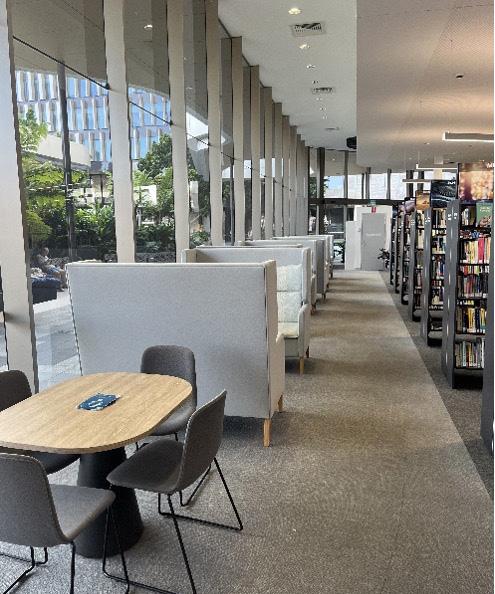

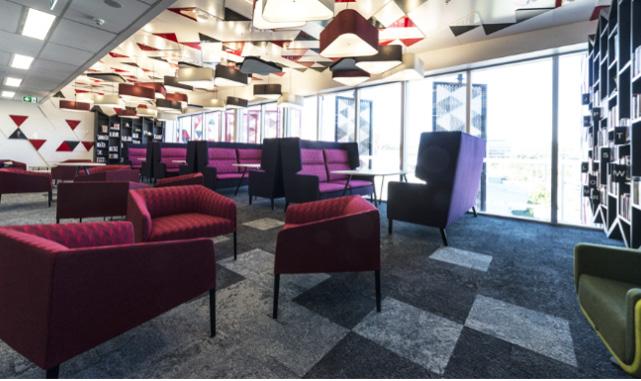
Crime Prevention Through Environmental Design principles (Guidelines for Queensland) were applied across all branches. These principles include activating spaces, passive surveillance, personal and community ownership, supportive management, clear signage and limiting vulnerable spaces.
Collaboration is another key response area. The busiest branch, located in a popular shopping centre, faced daily challenges, particularly from teens. By working closely with Centre Management and their security team, staff were able to implement a three- step process: speaking with the customer, directing them to leave if behaviour continued, and calling security if they refused. Developing that clear and simple process empowered the beleaguered staff and provided them with much-needed confidence and support.
By balancing aesthetics with function through introducing lowline and fit-for-purpose furniture, spaces became both visible and comfortable again and staff gained confidence in monitoring unacceptable behaviour.
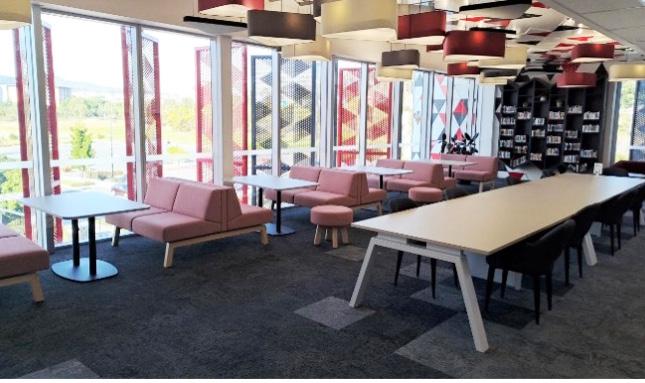
It is important to look both internally and externally to see who can provide the type of help that will work at each location and develop relationships that will drive solutions. The central branch in Ipswich collaborated closely with the council’s Safe City team, who provided visible and ongoing support. Collaborations extended to council’s workplace health and safety, compliance, legal and community development teams, as well as police. Similarly, at a more rural branch, library staff worked with local police and community groups, other council teams and the high school to address child and teen behaviours. A Collective Action Group was formed to support youth by providing alternative activities and places to meet, and by addressing identified issues including boredom, peer pressure and socioeconomic factors.
Staff training is crucial for developing skills and confidence. Ipswich Libraries provided training in:
• awareness and de-escalation
• duress buttons and security
• implementation of the Managing Unreasonable Behaviour Procedure for Libraries and Customer Services and the council’s Unreasonable Customer Conduct (UCC) Policy
• the complaints management process
• incident reporting
• risk assessment.
Staff also have access to the full suite of Ryan Dowd training (de-escalation training for interacting with people experiencing homelessness). Most importantly, the training needs to be relevant and presented in such a way that staff can apply it in their everyday interactions when needed. Tools, such as Conditions of Entry, Reconsideration Request form and bookmarks, and handouts for
support workers provide staff with tangible tools to use in their engagements.
Teams across Ipswich Libraries were also supported via debriefing sessions, learning to ‘tag out’, one-on-one check-ins with supervisors and the Employee Assistance Program, which delivered sessions to staff on effective personal coping strategies.
In addition to these workshops, the psychosocial wellbeing of staff was addressed through a series of steps including hazard identification, risk assessment, the development of a Rectification Action Plan, a Residual Risk Assessment and a staff survey to gauge efficacy and next steps.
Communication
Communication is integral to addressing the inappropriate behaviours successfully, particularly as some strategies take time to develop, approve and implement. Channels
included monthly reporting, team meetings, daily team briefings, individual conversations and the annual library survey. When the library service’s satisfaction dropped in the annual survey, it highlighted to council the impact of unreasonable customer conduct, the challenges faced by staff and customers, and the multifaceted approach libraries were taking to reduce incidents and support staff.
Incident reporting is emphasised, and staff use prefixes for easy categorisation and filtering for reports. Ipswich Libraries uses ‘UCC’ for unreasonable customer conduct incidents and ‘UCC-CHILD’ for unattended child incidents.
Raising awareness, seeking help and collaborating are key strategies. Examining the environment and learning from experts, supporting each other, training, communicating and reporting are all crucial. Above all, persistence is essential.
The persistence of Ipswich Libraries staff influenced the progression of the council’s zero-tolerance approach and prioritising of staff and customers, and safety has now been added as one of council’s six core values.
ABOUT THE AUTHOR
Sue Cicolini, Library Branch Services Coordinator, Ipswich Libraries, Ipswich City Council sue.cicolini@ipswich.qld.gov.au
Curated with Care
Digitized in collaboration with leading libraries and archives.
Broad Disciplinary Coverage
Ideal for departments across history, religious studies, language, and regional studies.
Research-Ready Content
Original sources essential for undergraduate and advanced scholarship.
Key Subject Areas Include:
▪ Asian Studies
▪ Biblical Studies, Ancient Near East & Early Christianity
▪ History
▪ Jewish Studies
▪ Latin American Studies
▪ Middle East & Islamic Studies
▪ Religious Studies
▪ Slavic & Eurasian Studies
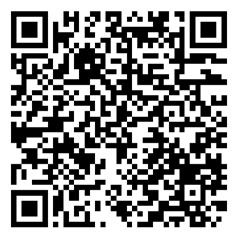
Scan QR code to get more details!

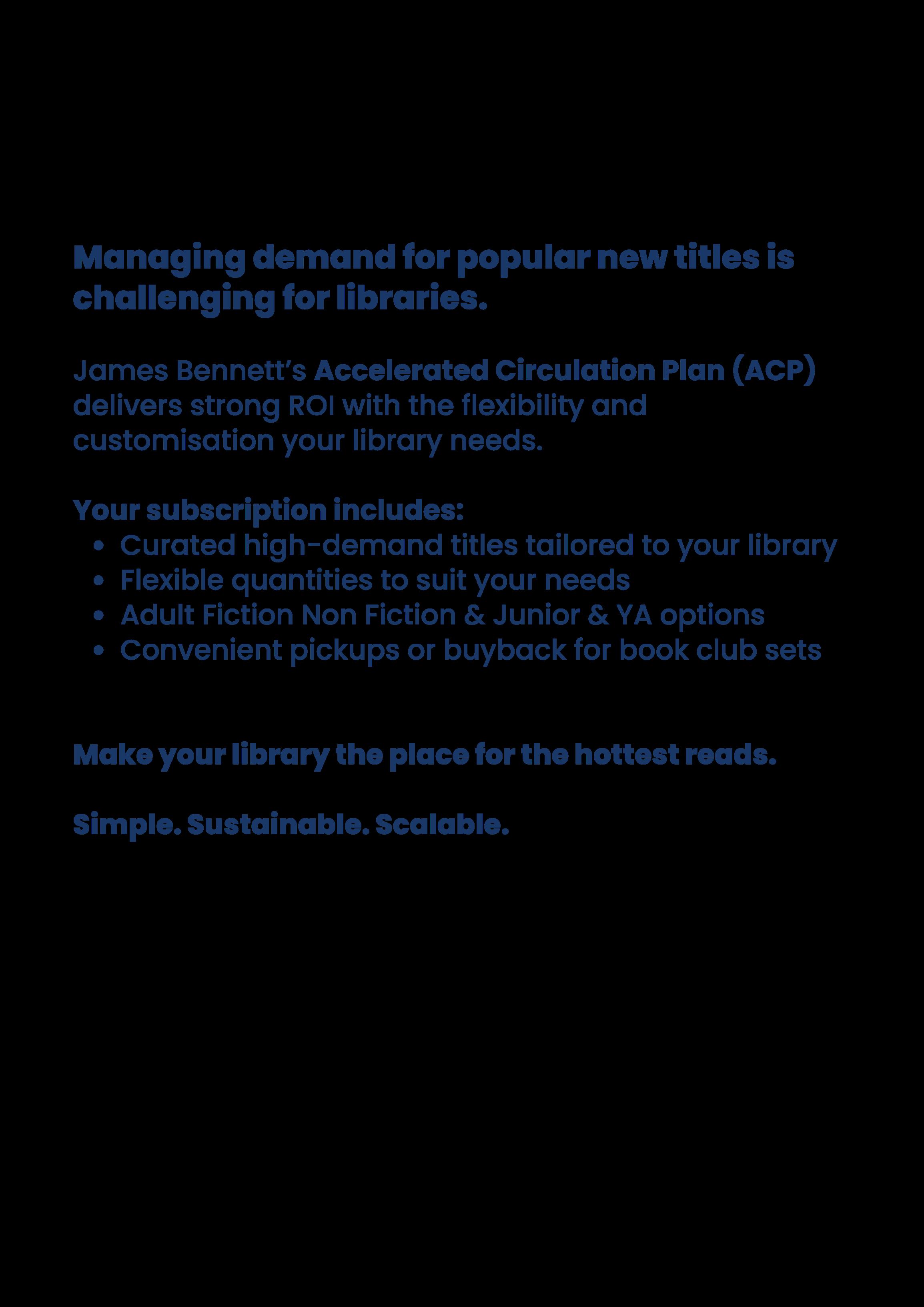

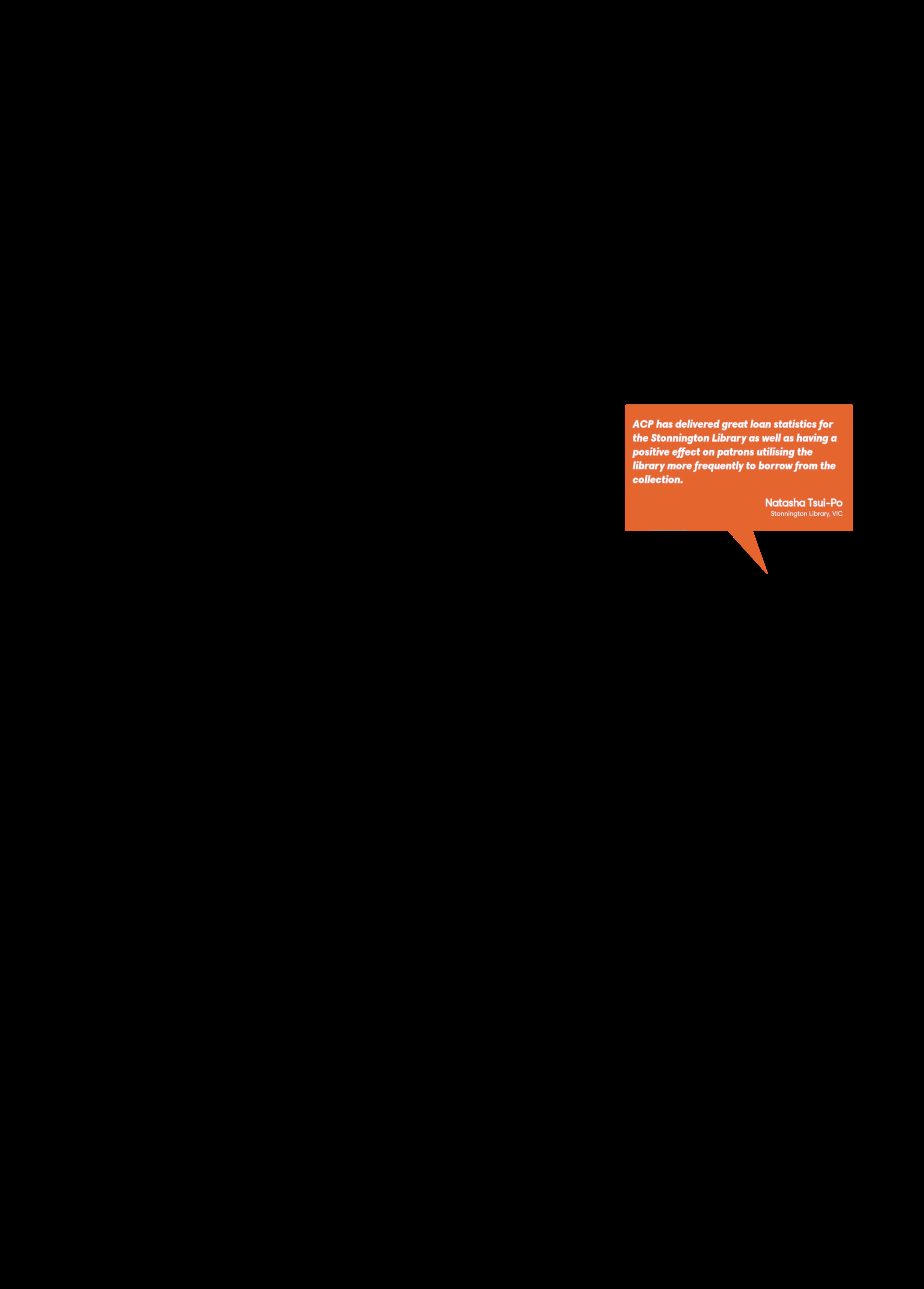
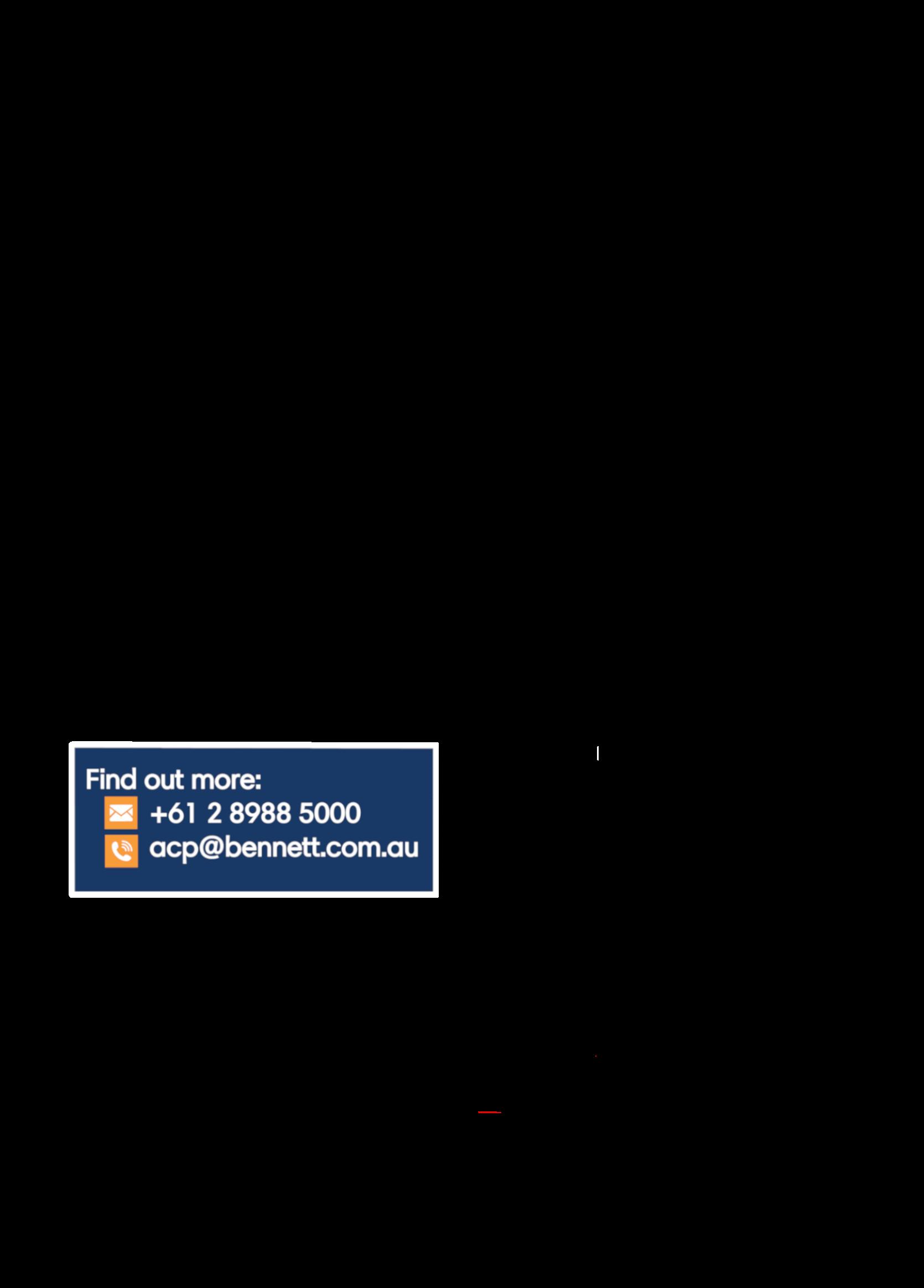


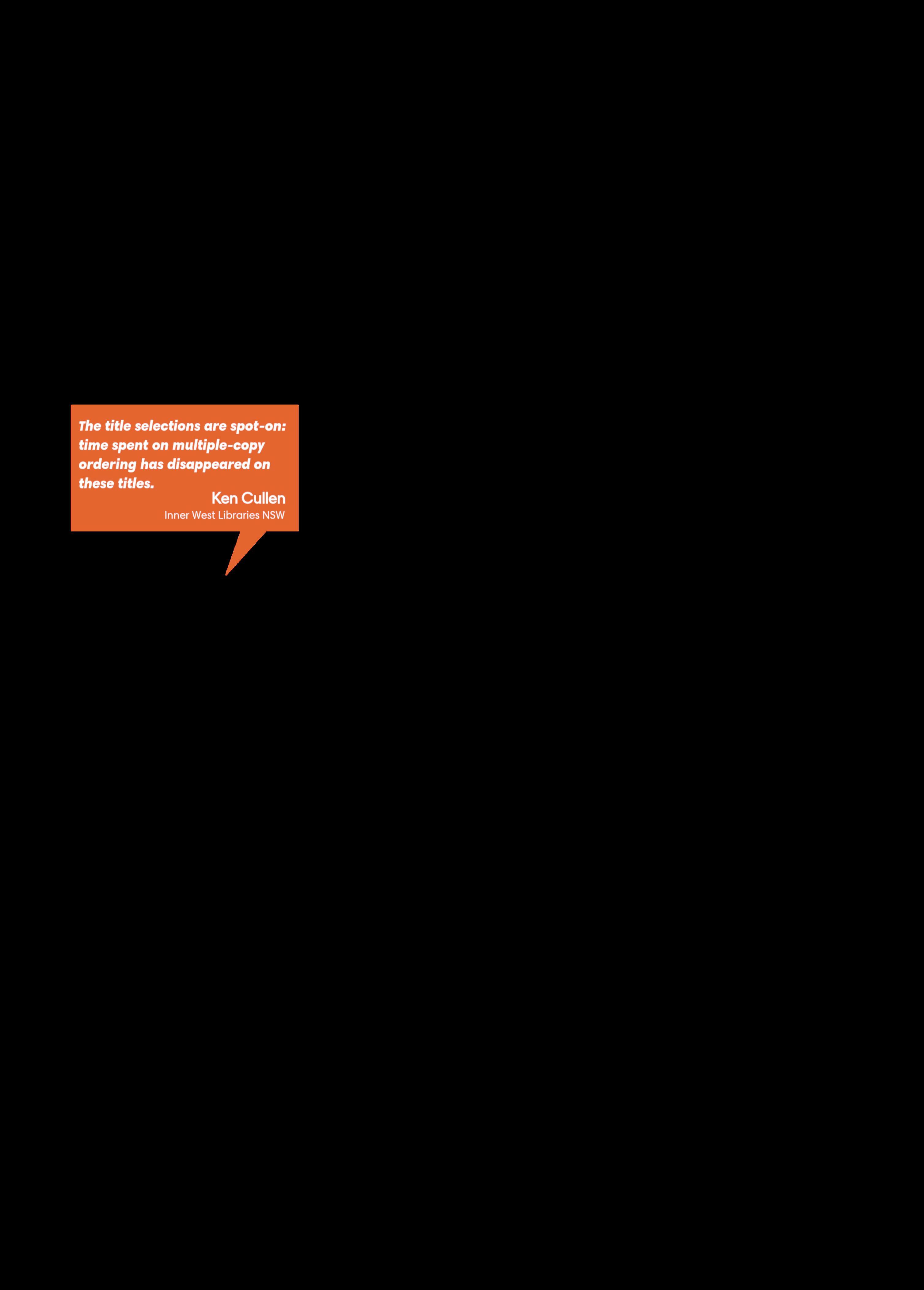

Public libraries have long been seen as institutions of learning but, in recent years, their role has quietly expanded. Increasingly, libraries are becoming safe, supportive spaces for community members navigating loss, grief and end-of-life challenges.
At Redland City Council Libraries in Queensland — an area with an ageing population — staff are frequently approached by patrons dealing with death or advanced illness. Death-related interactions range from clients returning books borrowed by a loved one, to printing legal documentation, to seeking information and resources on grief or advance care planning. Often, the conversations are sensitive and emotive and, while librarians are not counsellors, they are often a first point of contact for someone seeking assistance during a loss.

Such inquiries are not unique to Redland City Council. In the UK, the Death Positive Libraries initiative was launched in 2021 by the non-profit, charitable organisation Libraries Connected, in response to widespread grief following the COVID-19 pandemic. The initiative encouraged participating libraries to host ‘Death Cafes’ — community-led discussions focused on death and dying — and to create displays and collections that normalise conversations centred around death. The scheme was positively received and proved a valuable service to patrons.
In practical terms, libraries can support grieving patrons by maintaining curated collections of books on mourning, funeral planning and coping with loss. Furthermore, including digital resources such as webinars, podcasts or grief support directories helps ensure accessibility to useful information on death and dying. By providing referral lists, including local bereavement counsellors and non-profit support groups, libraries may be able to help patrons more easily locate professional support as needed. And, with the advent of other services such as makerspaces, where technology may be used to make memorial videos, or feature talks or workshops on advance care planning, libraries are in a position to help demystify and further normalise death and dying as a shared, human experience.
But, while the focus upon patrons and the community is at the heart of the Death Positive Libraries initiative, it is important to recognise staff impact, too. Dealing regularly with emotional topics can take a toll and, as Dr Jane Garner and Beth Wahler’s research suggests, the risk of burnout and vicarious trauma among library workers, who frequently engage in emotionally intense interactions, is heightened.
To address this, libraries might invest in training and support for staff. Providing resilience in the workplace workshops can better prepare employees confronted by difficult or challenging conversations while maintaining healthy boundaries. Additionally, providing staff with a toolkit explaining how to navigate sensitive conversations on death and dying with clients while maintaining professional boundaries can be of great benefit for staff. Furthermore, providing access to mental health resources — such as offering Employee Assistance Program (EAP) services — is essential. Yet, as indicated from research undertaken at Redland City Council Libraries, simply offering these services isn’t enough; staff need to understand what specific EAP services offer, their processes and their benefits without fear of stigmatisation, in order to feel confident engaging with them.
Ultimately, creating a culture of support in the workplace is key to the success and wellbeing of staff engaging in bereavementrelated interactions. Regular debriefing sessions, peer support networks and open conversations around emotional labour can further strengthen staff wellbeing. Encouraging a workplace culture that values employee self-care is imperative to the successful delivery of the services offered to patrons.
And forming a collaborative network with other councils and library services is fundamental: willing engagement in knowledge exchange can only make our services stronger, for customers and library employees alike. For this issue extends far beyond the remits of the Redlands, or even the UK: it affects all corners of society. As the International Federation of Library Associations and Institutions so inspiringly proclaims, we are stronger together.
Ultimately, libraries are well-positioned to offer information and connection to those experiencing grief. There is much work to be done, but by equipping staff with the tools and support they themselves need, libraries can compassionately serve grieving communities.